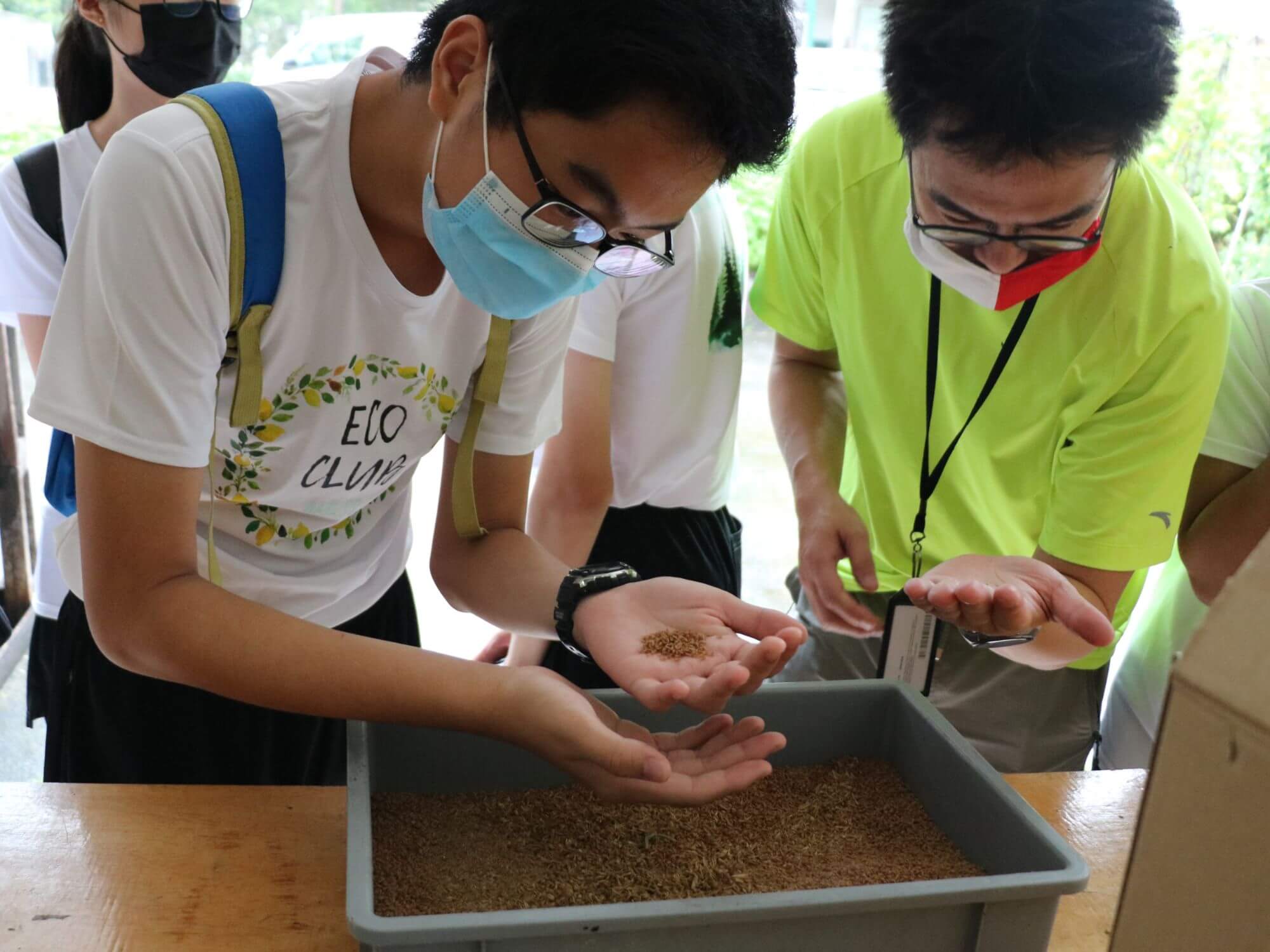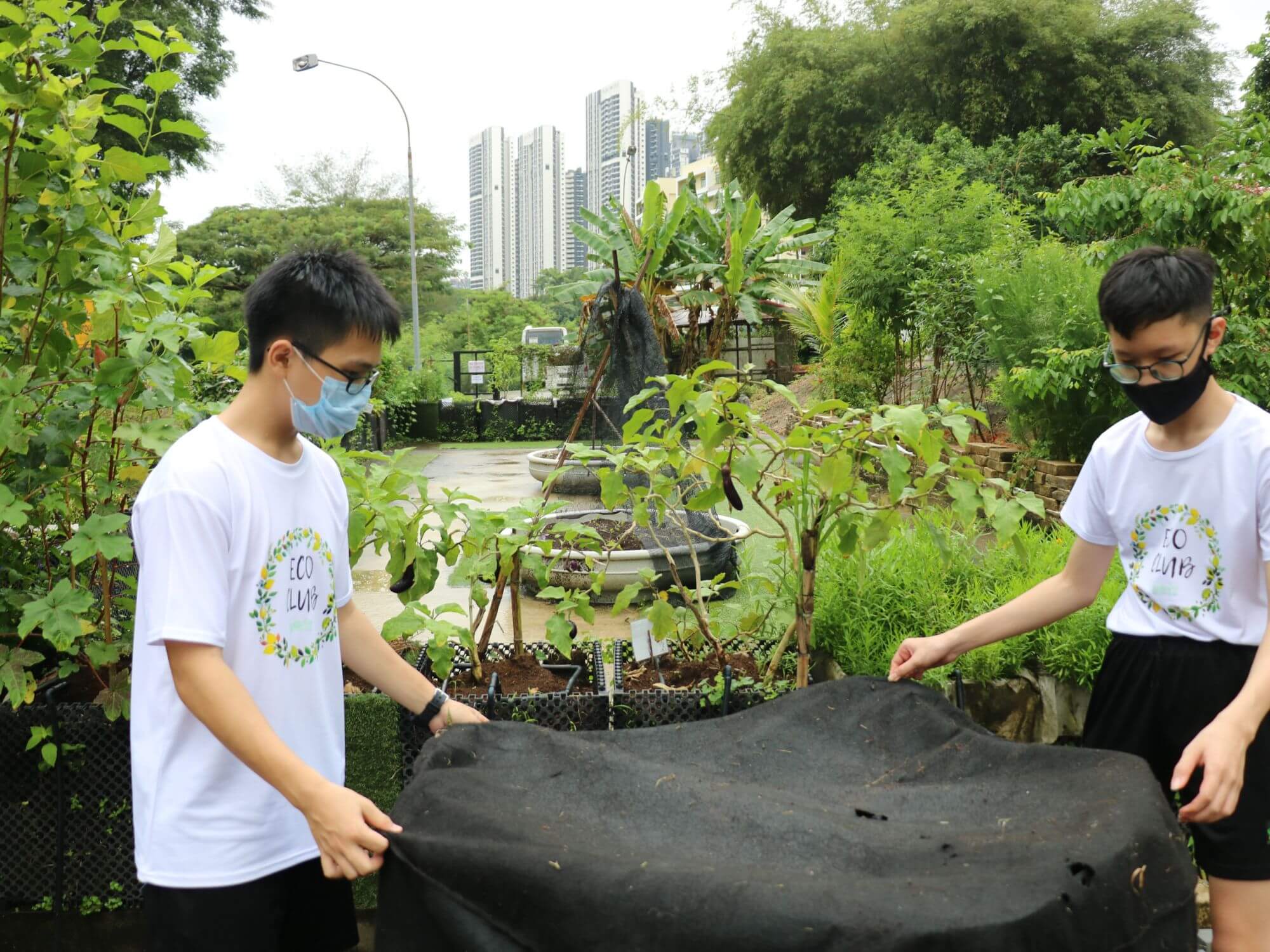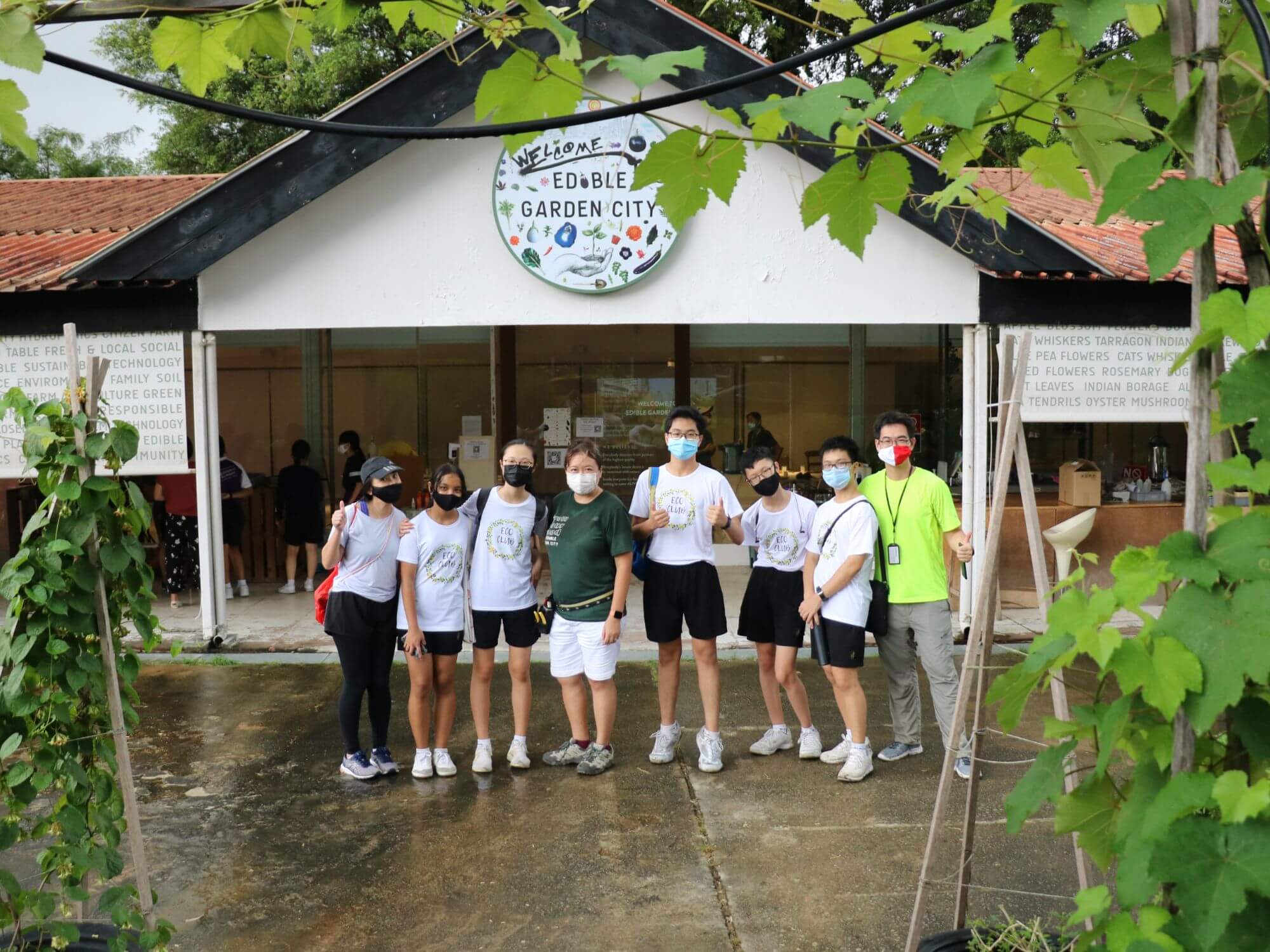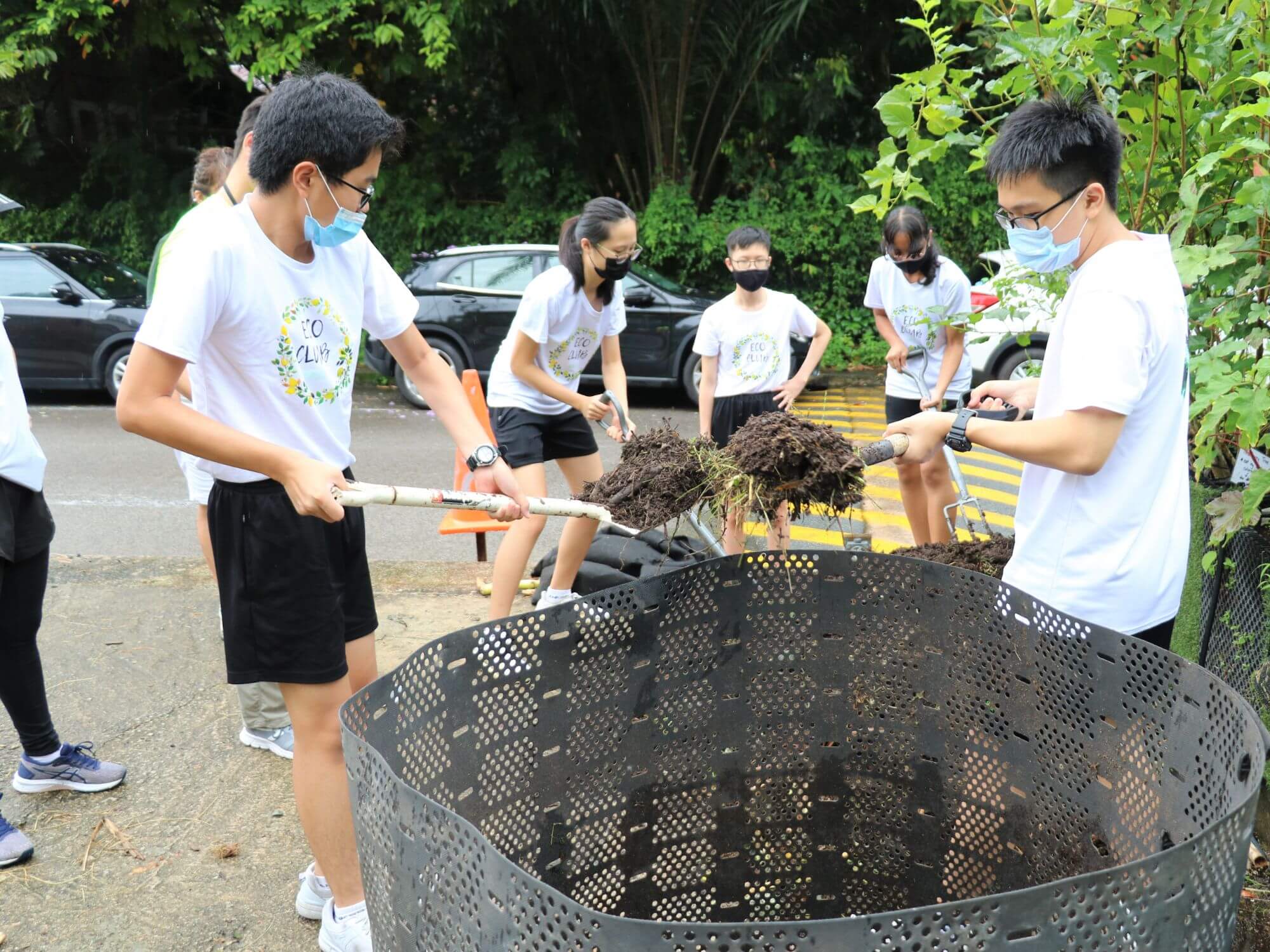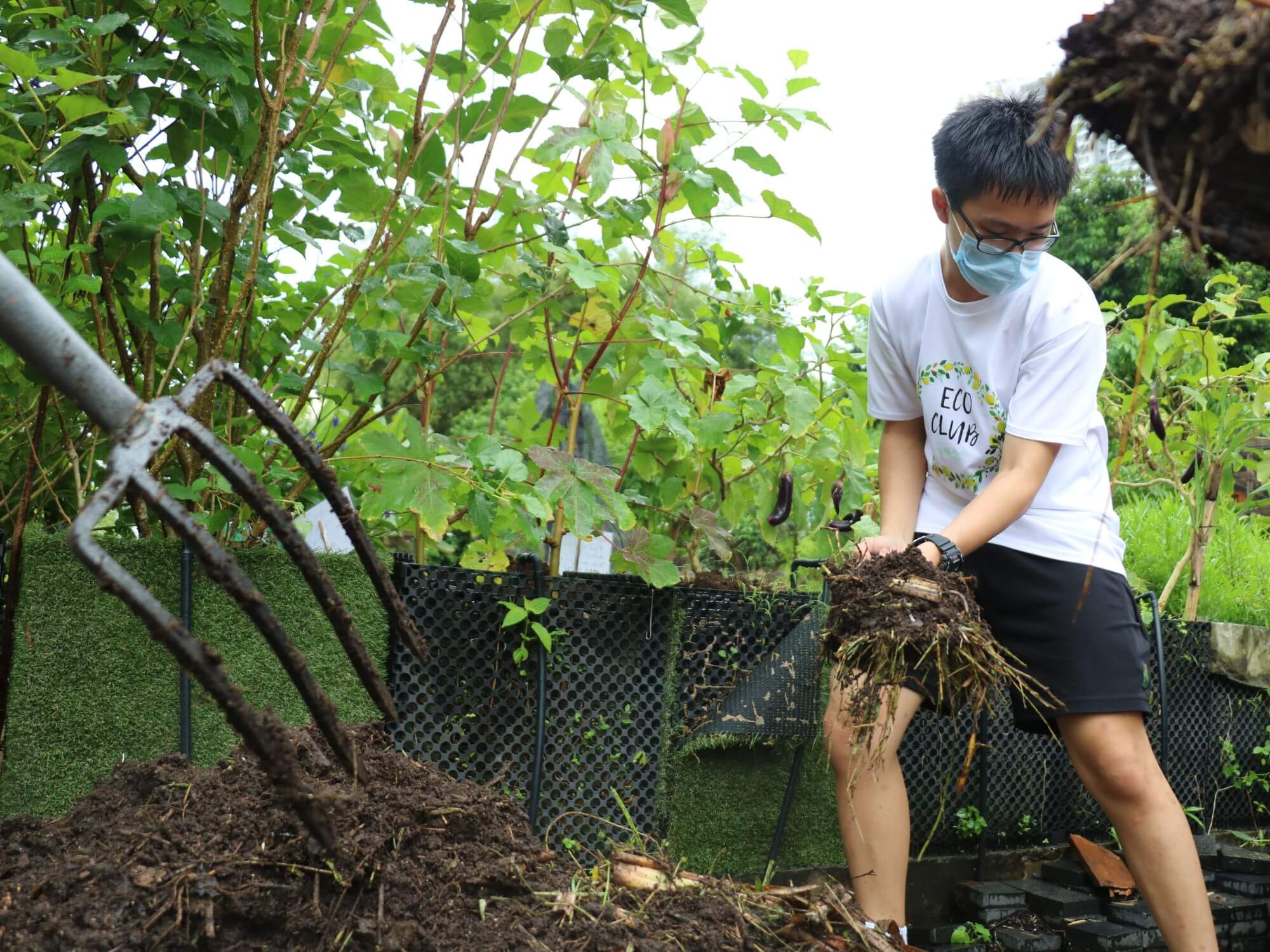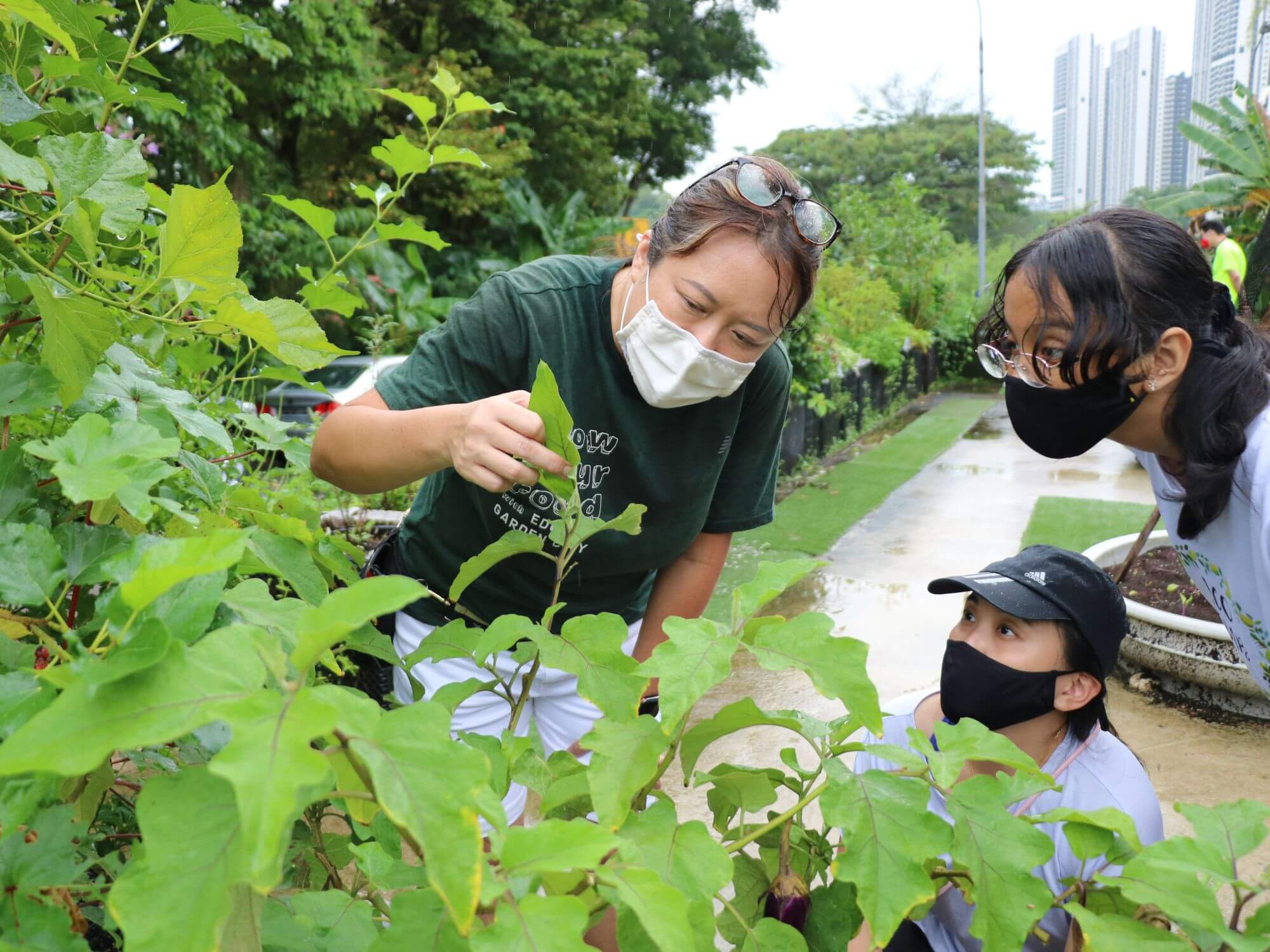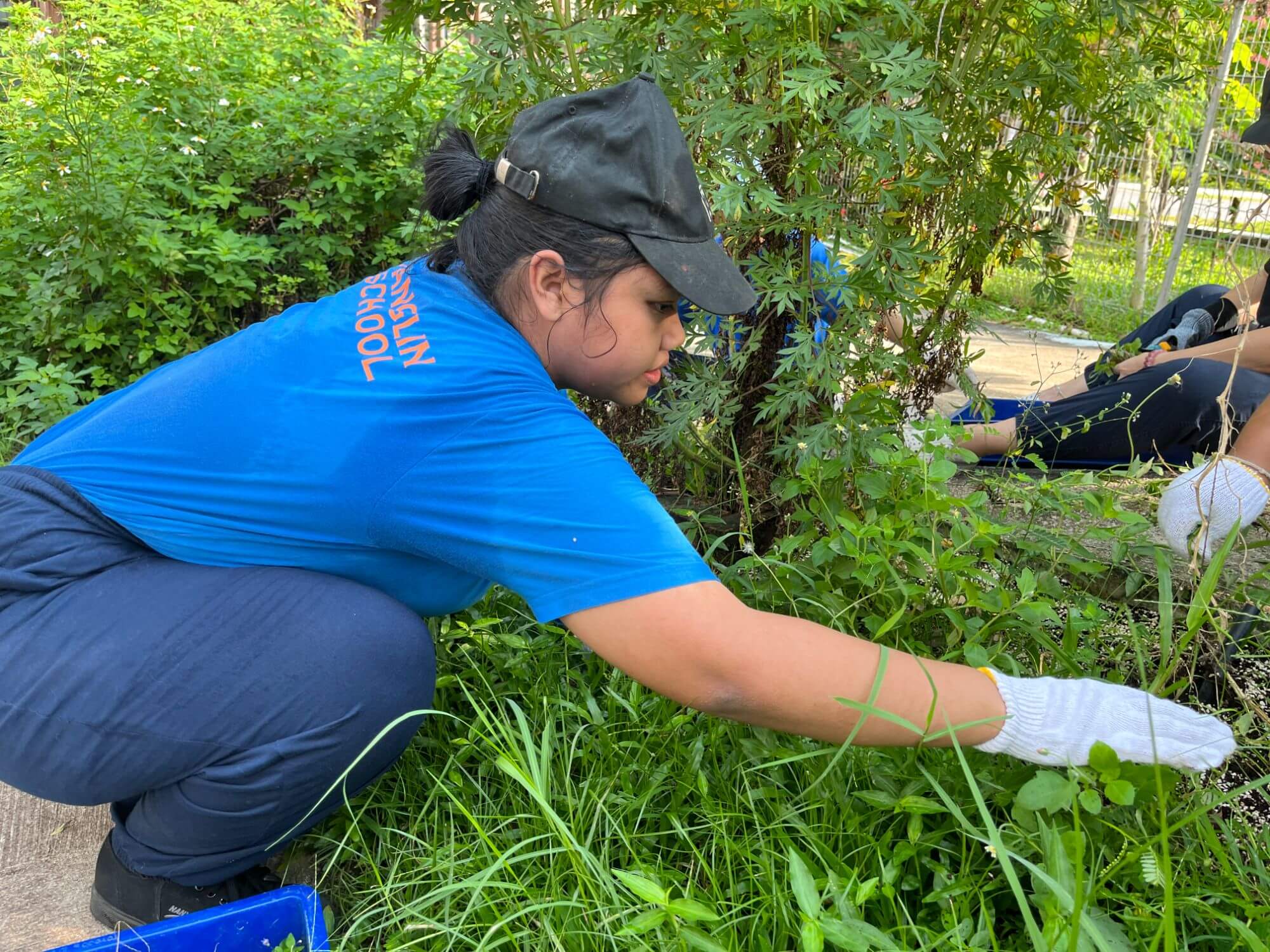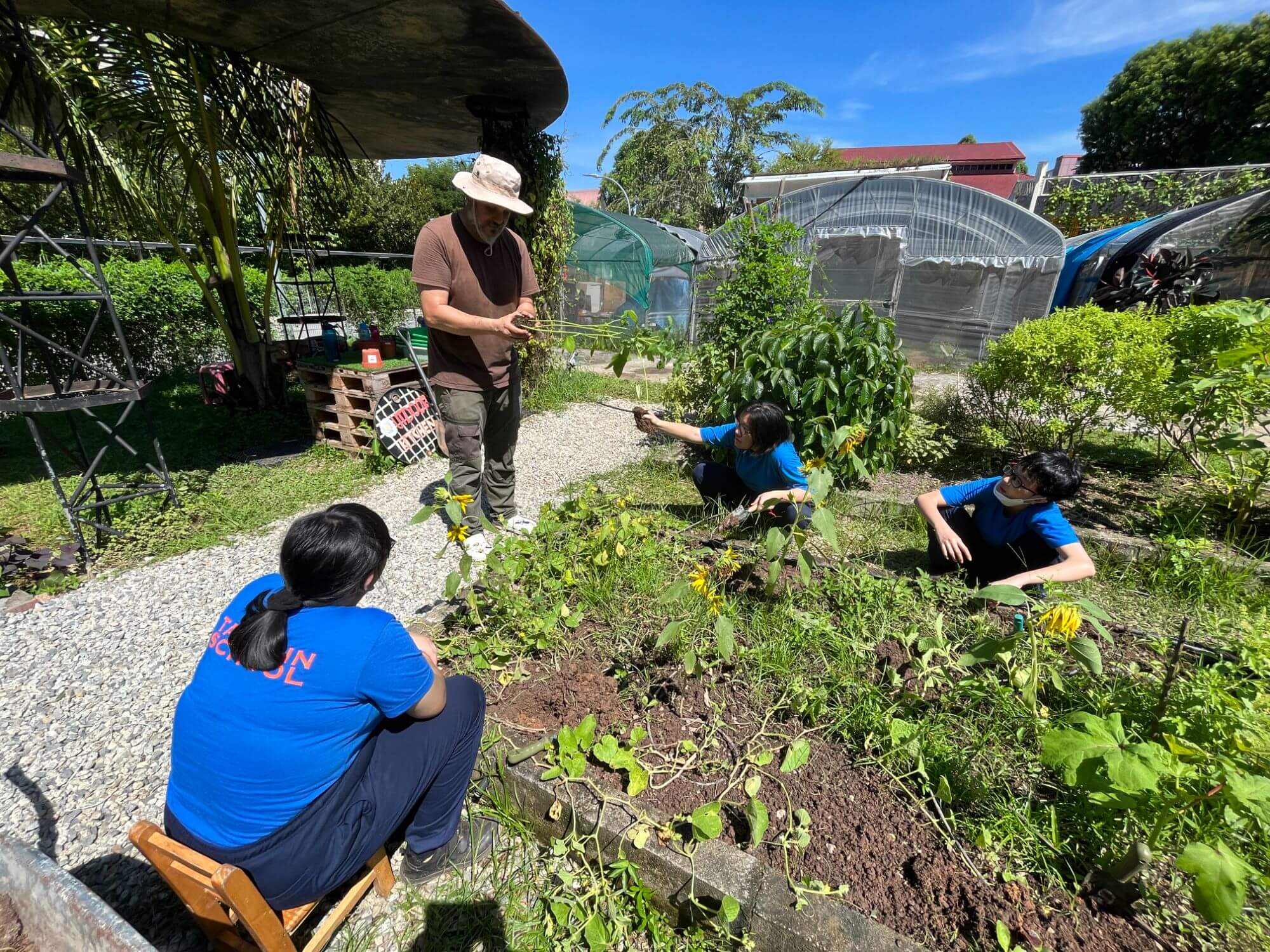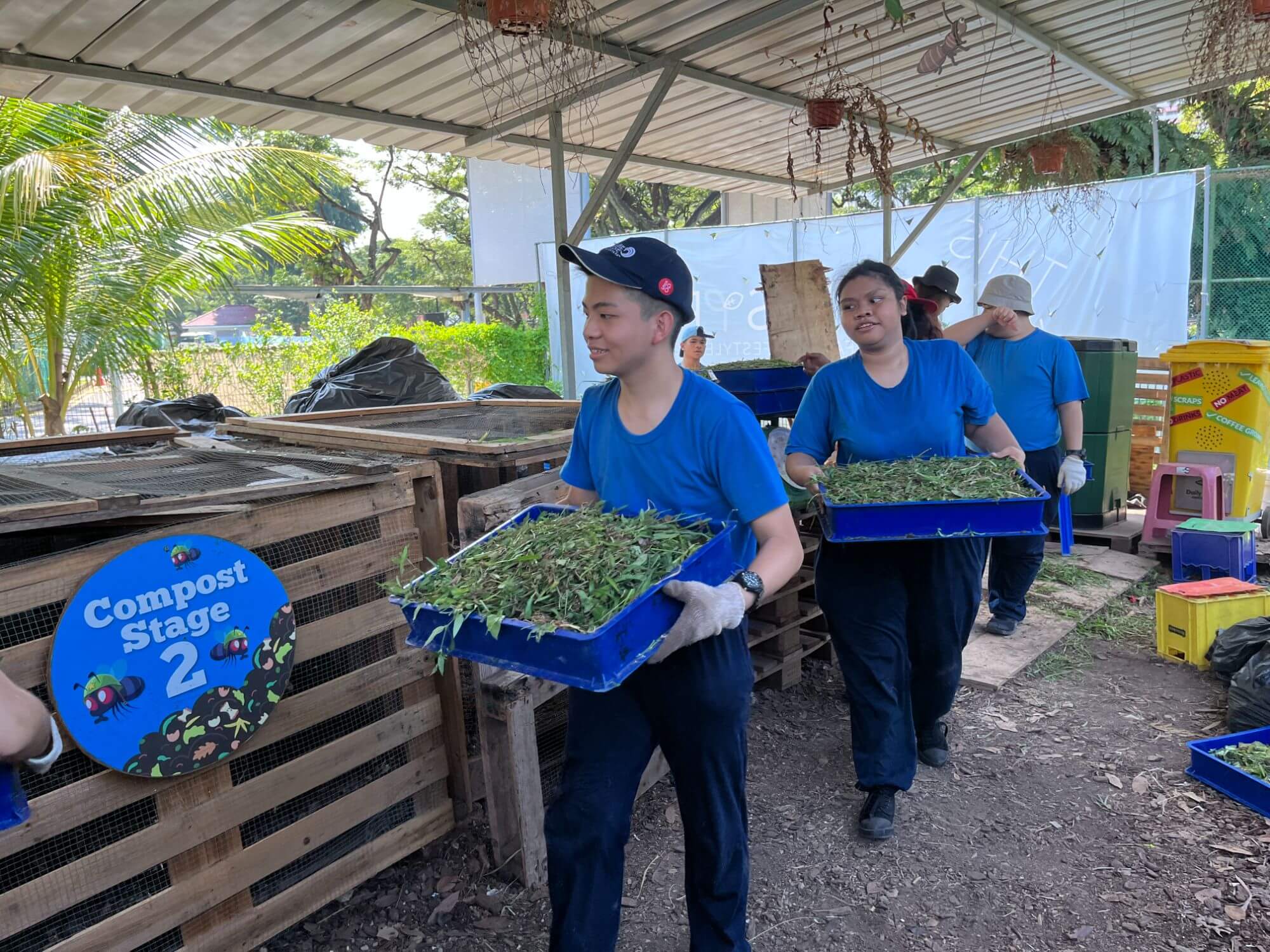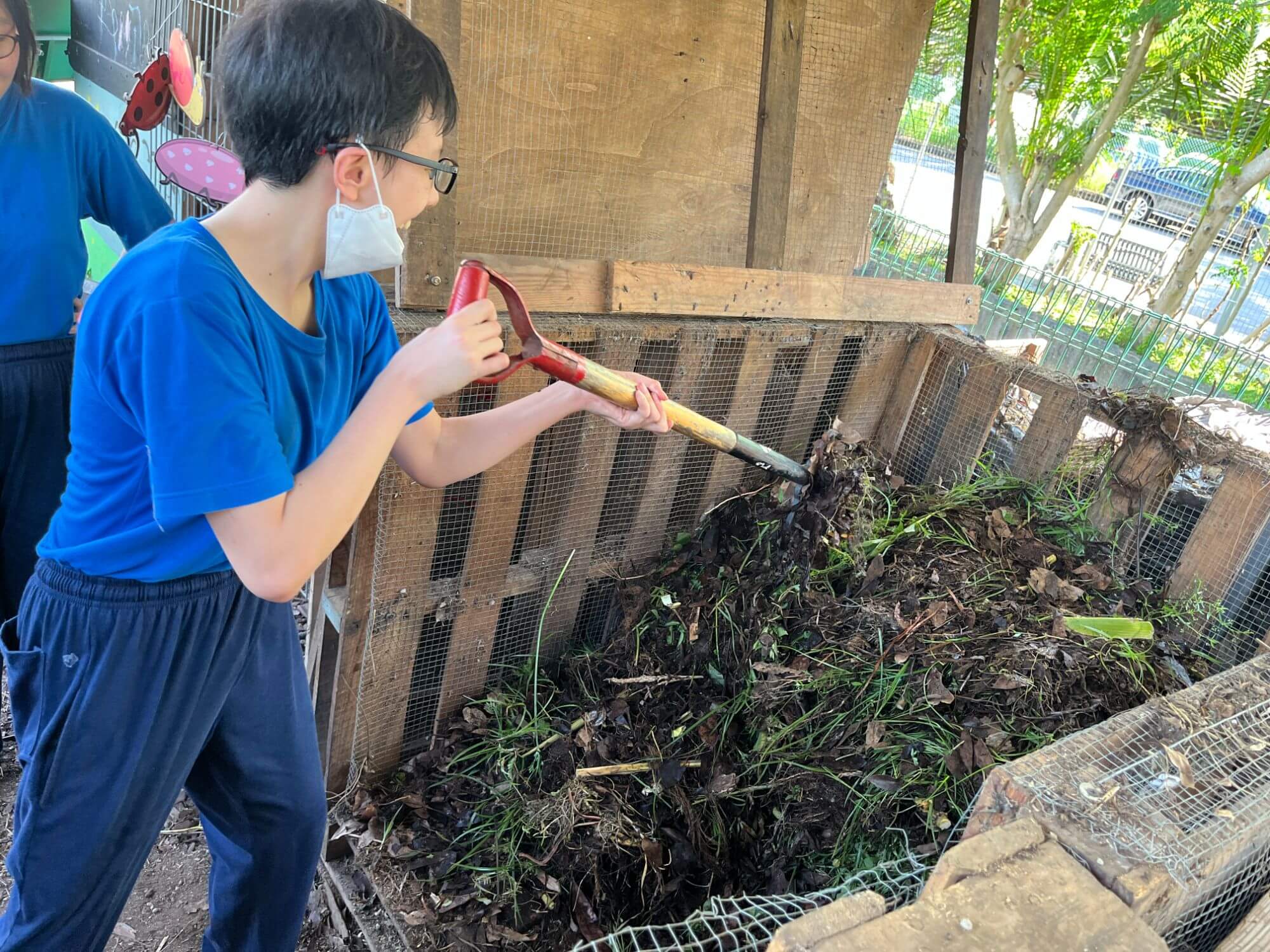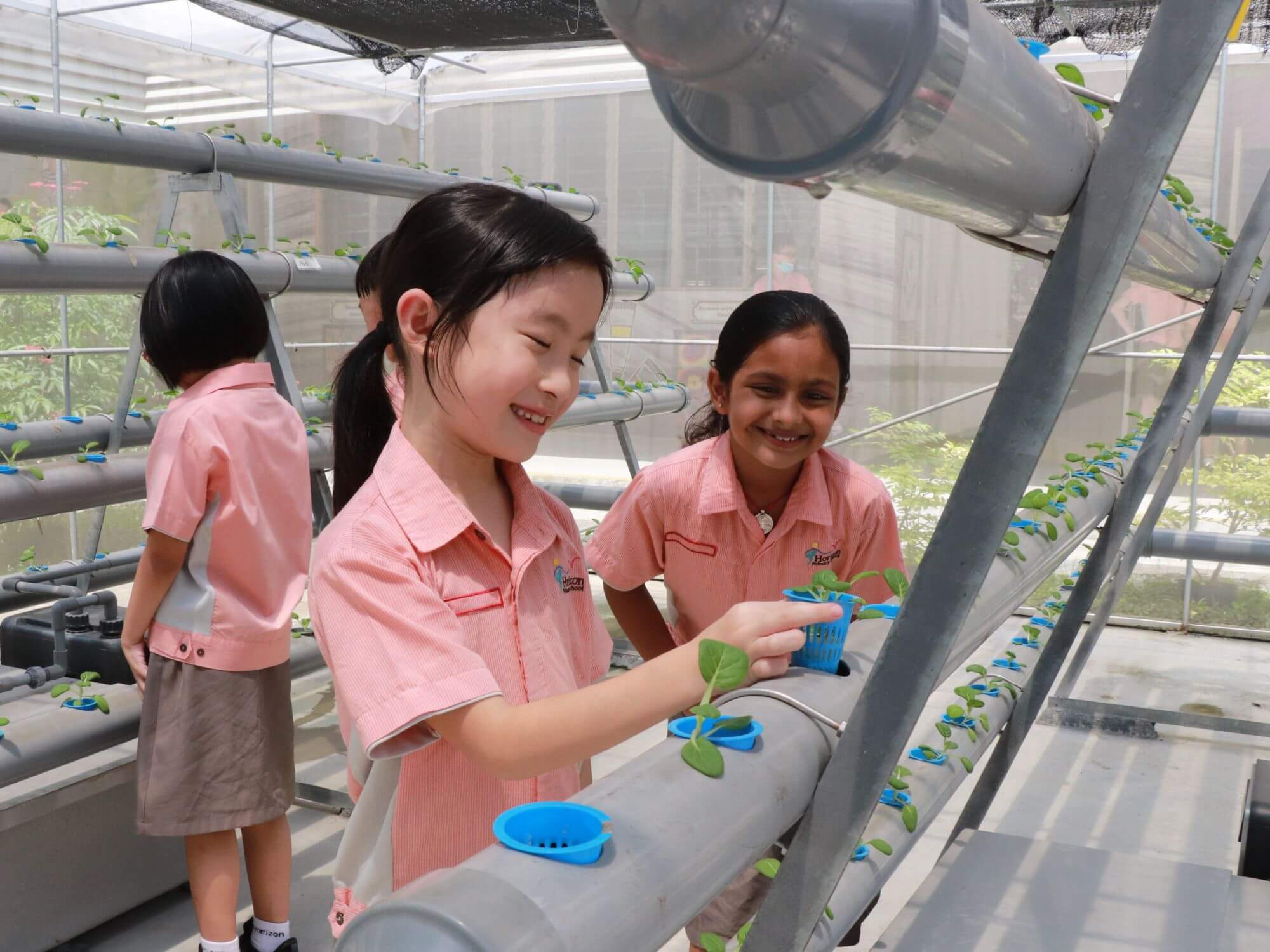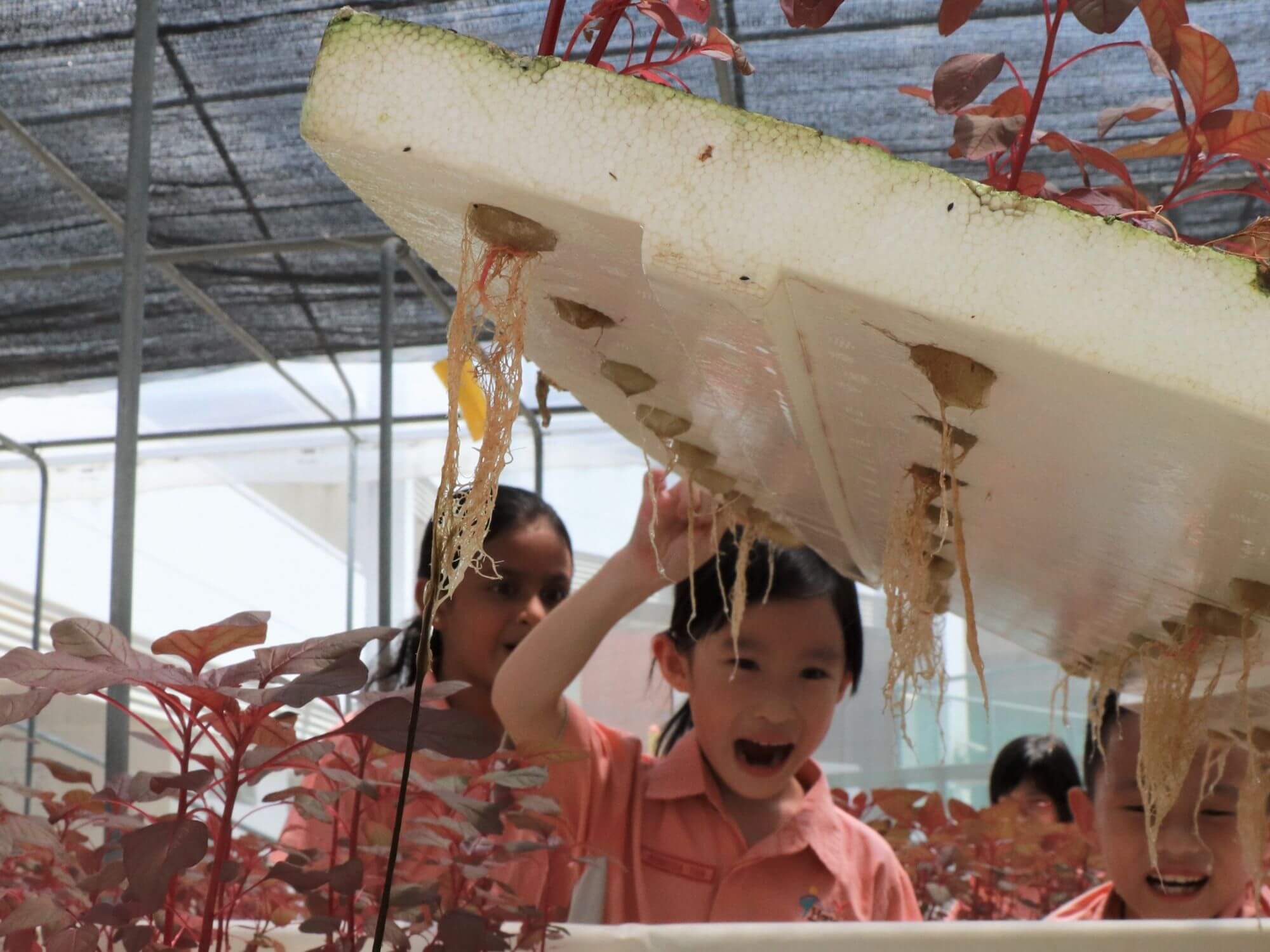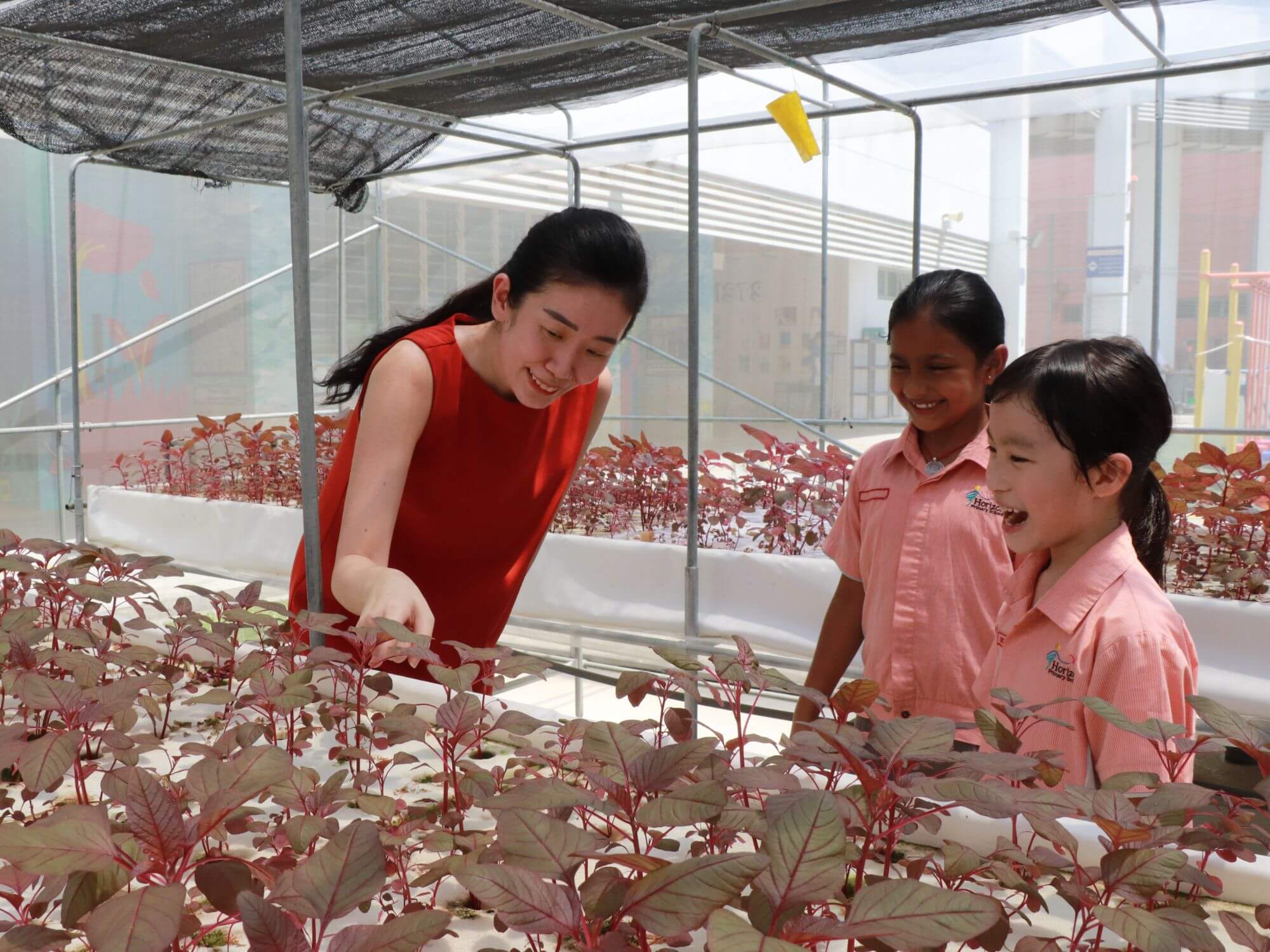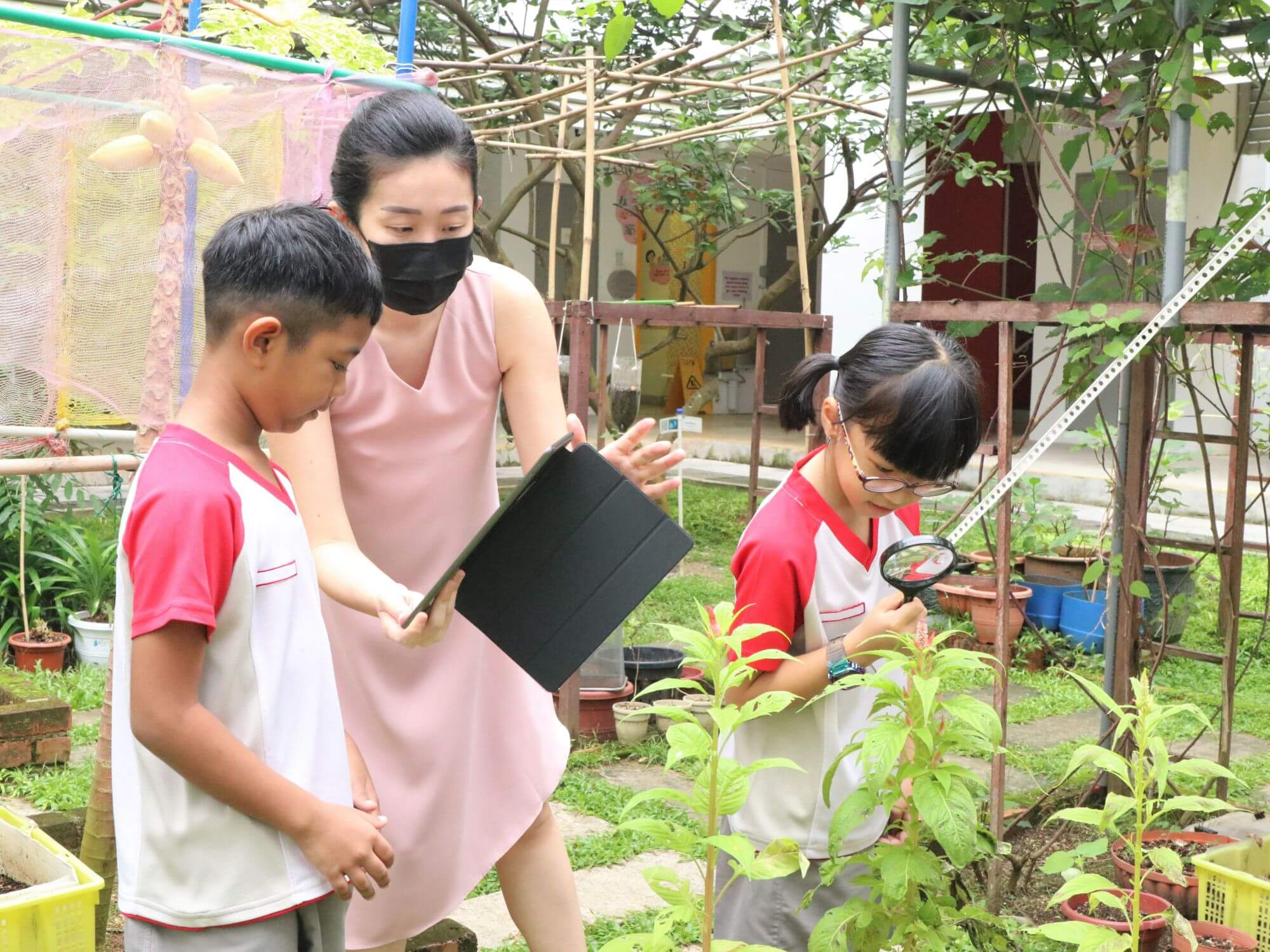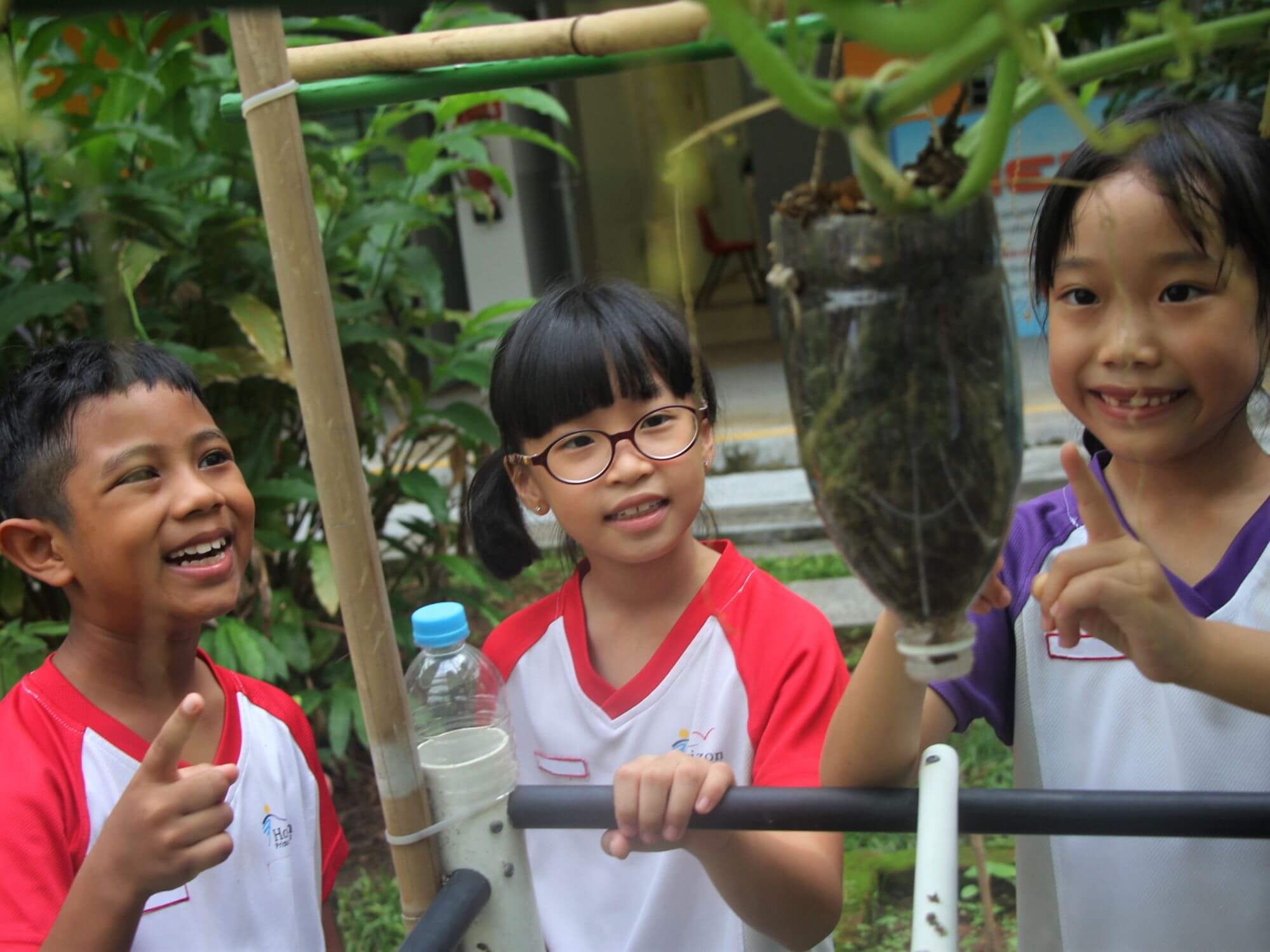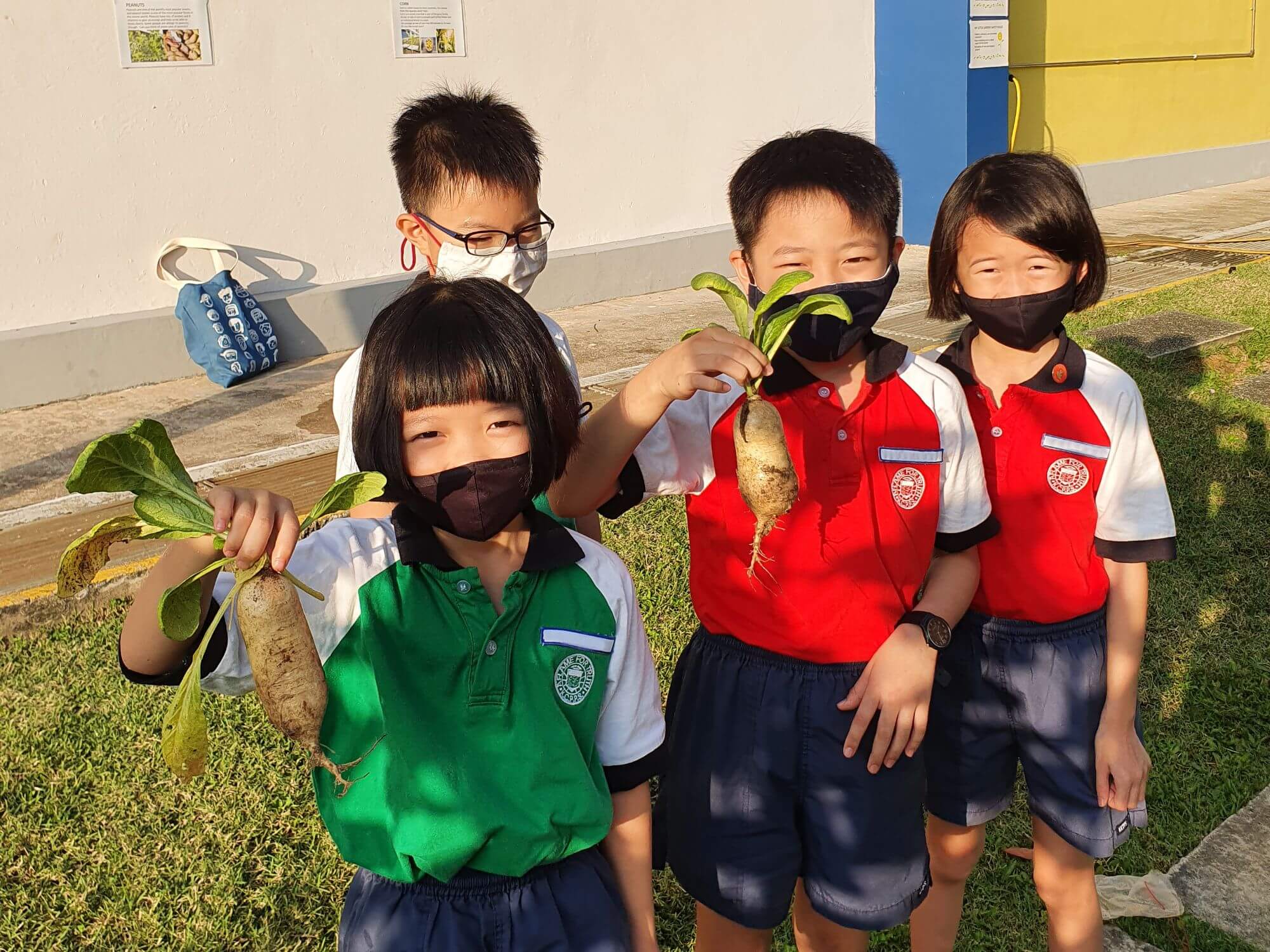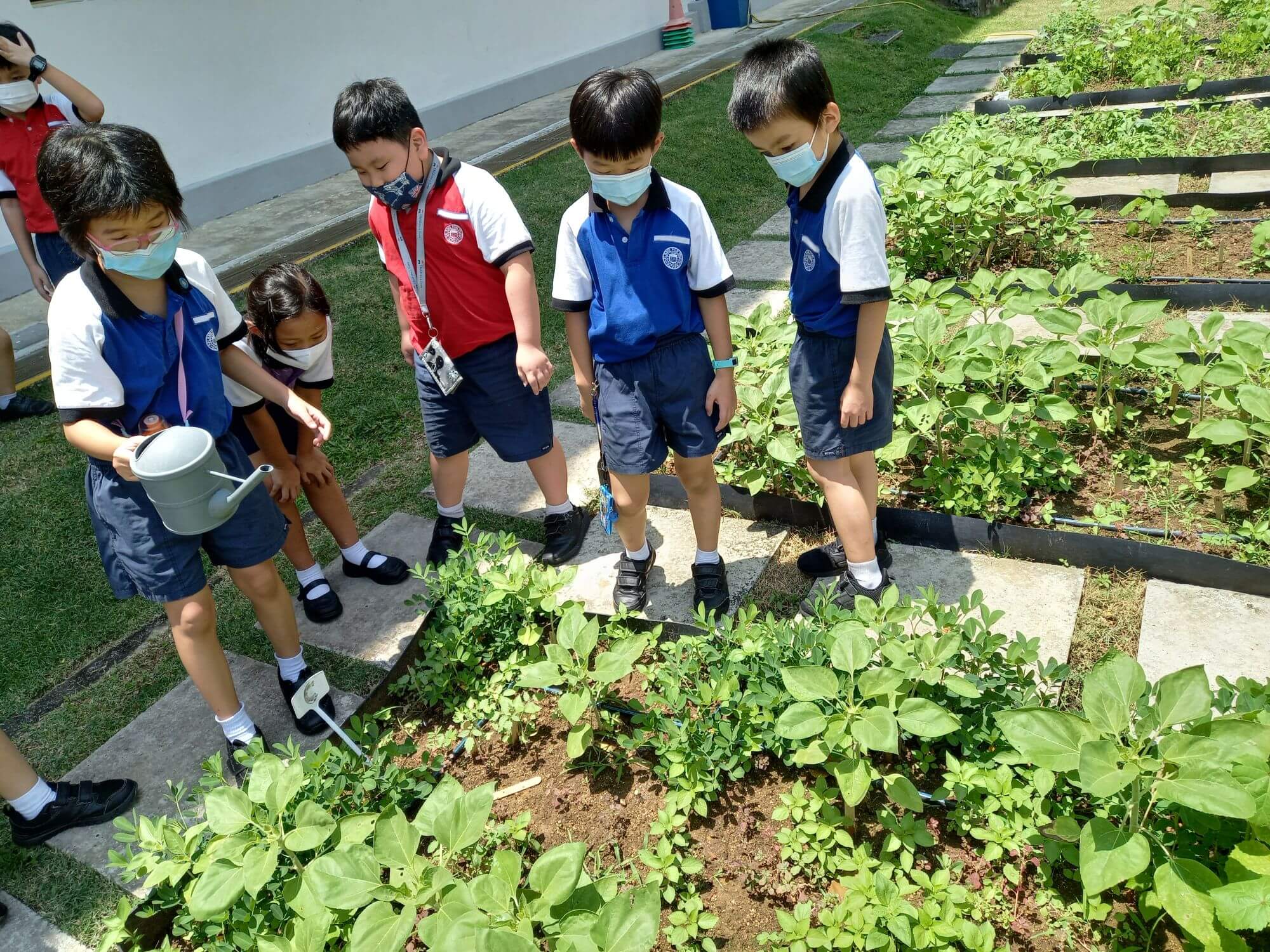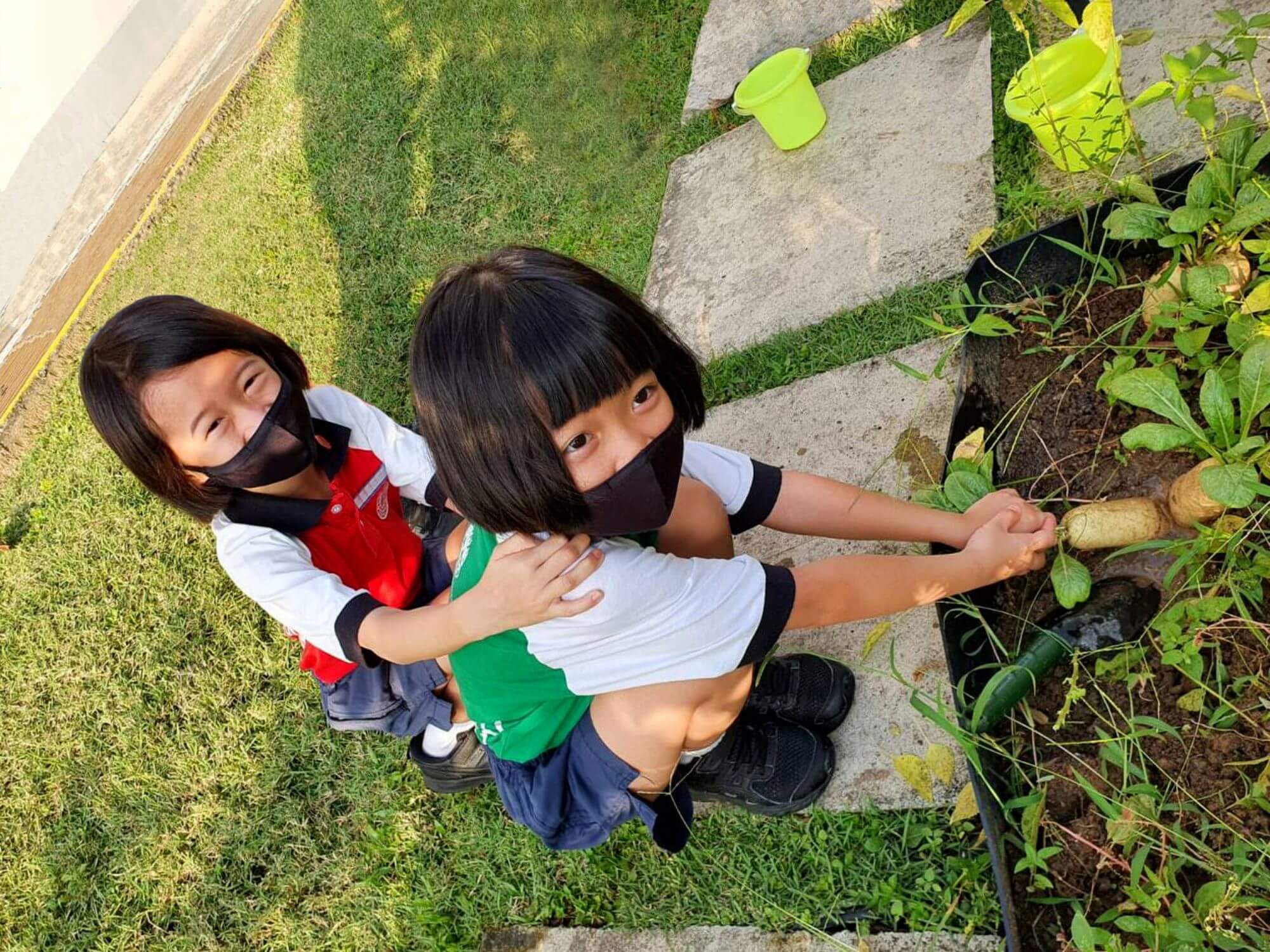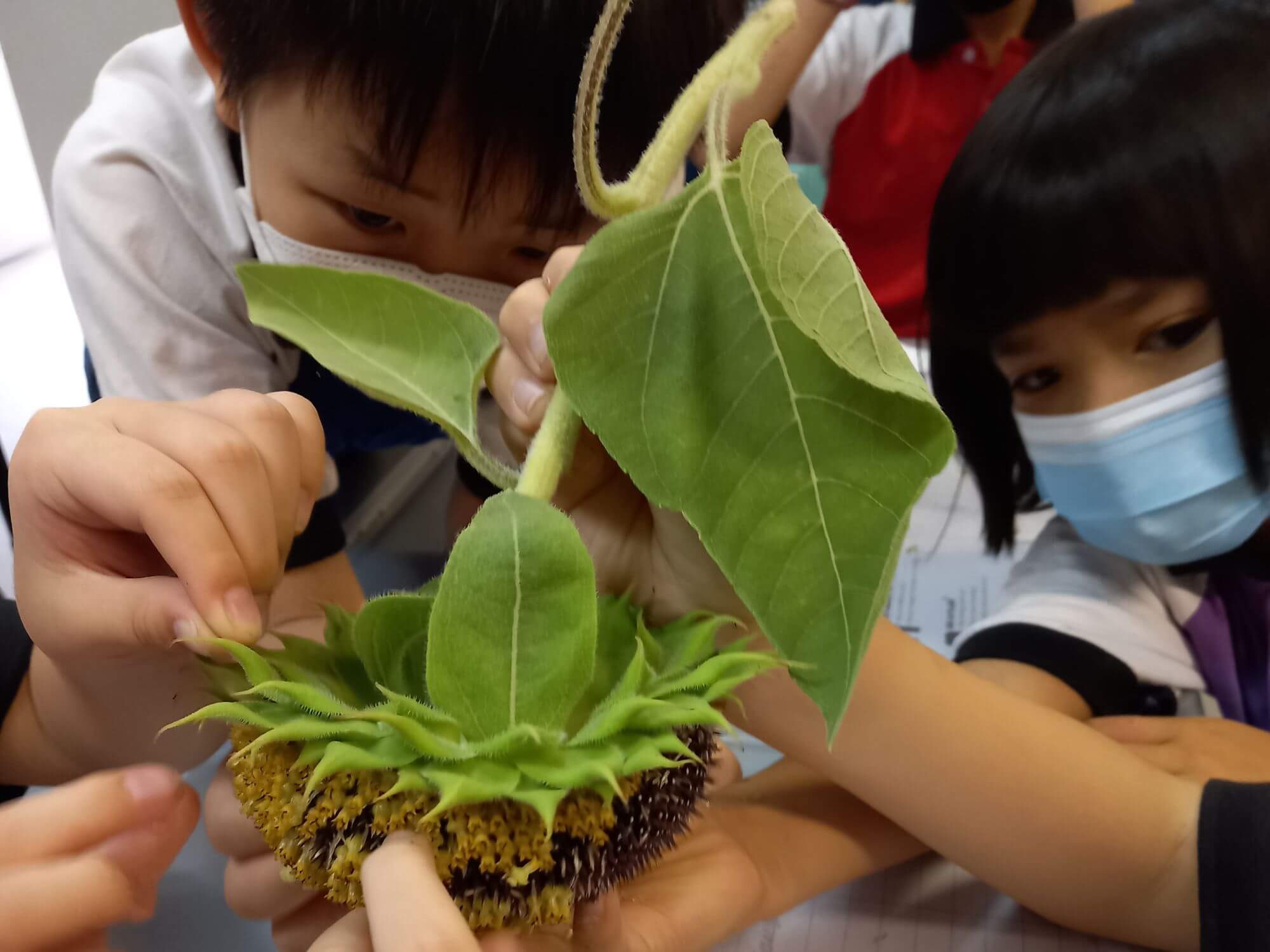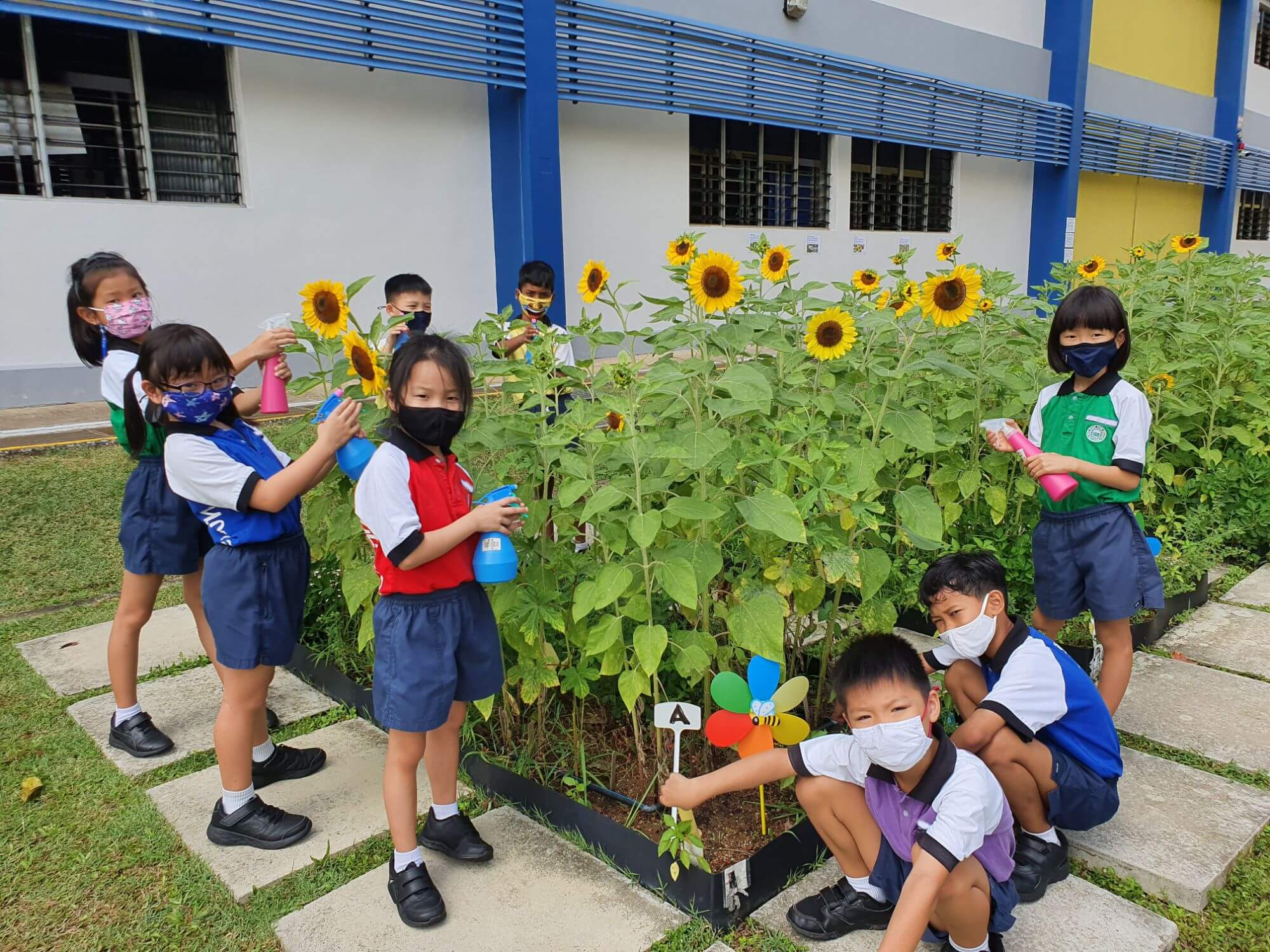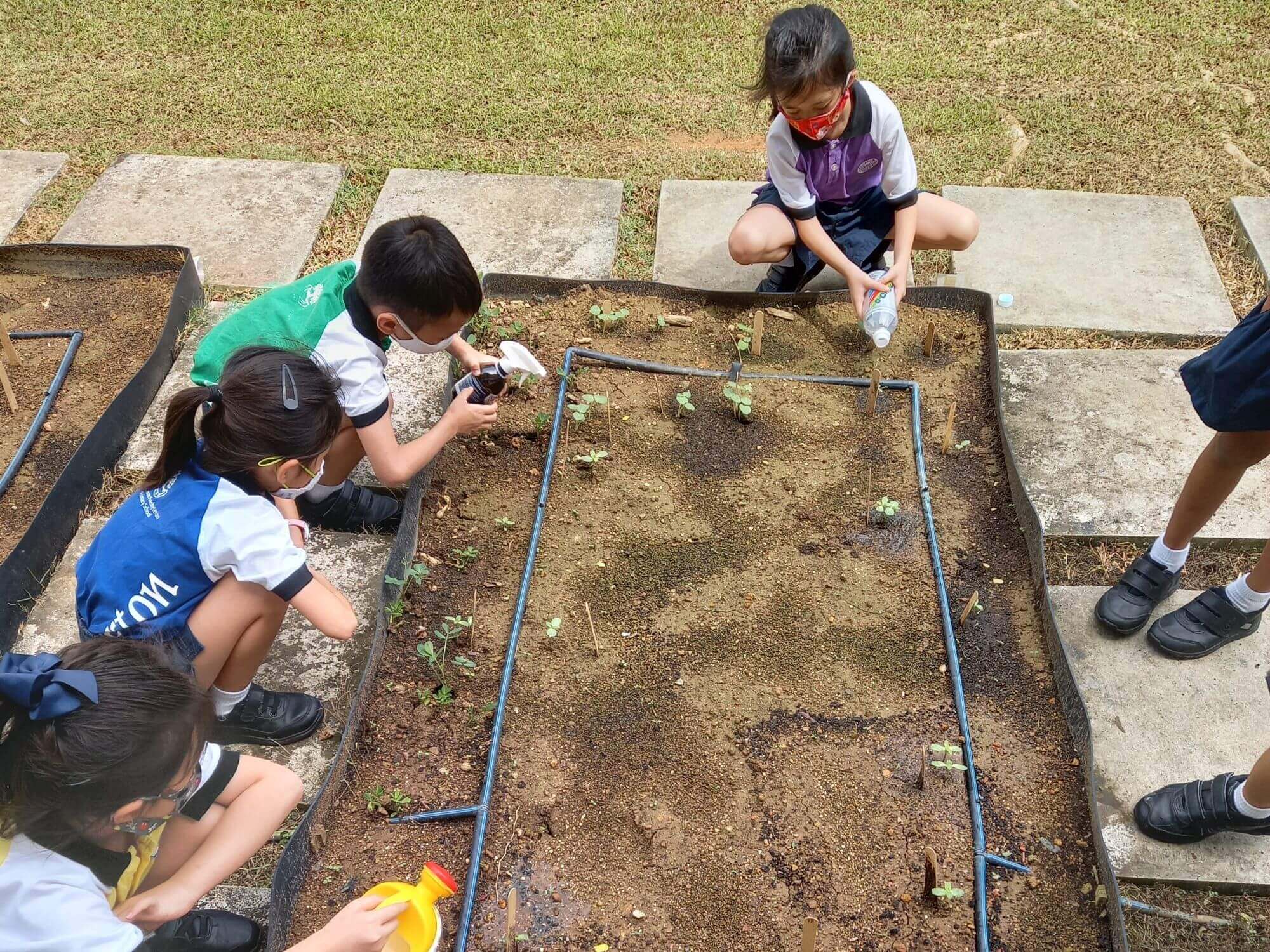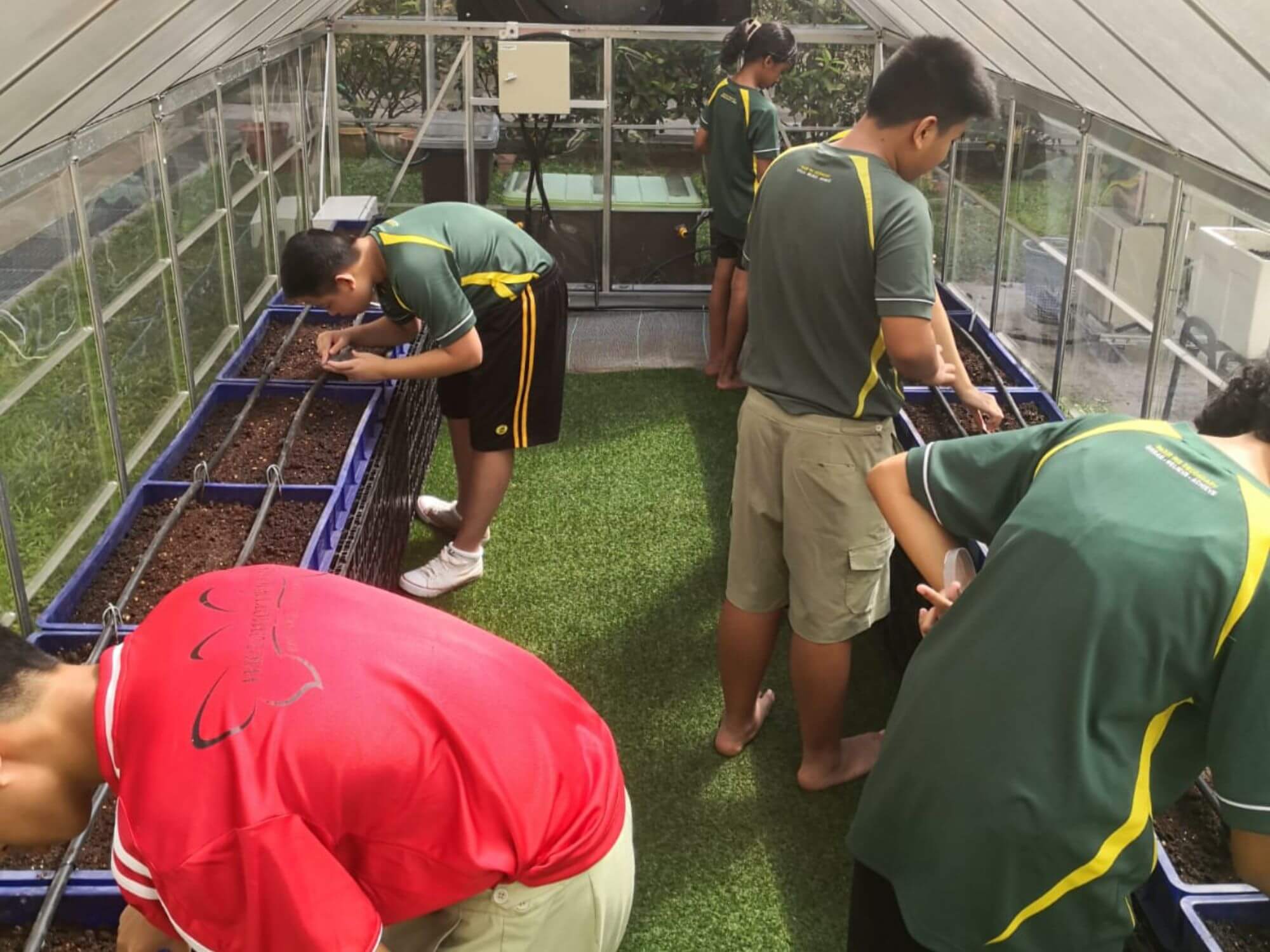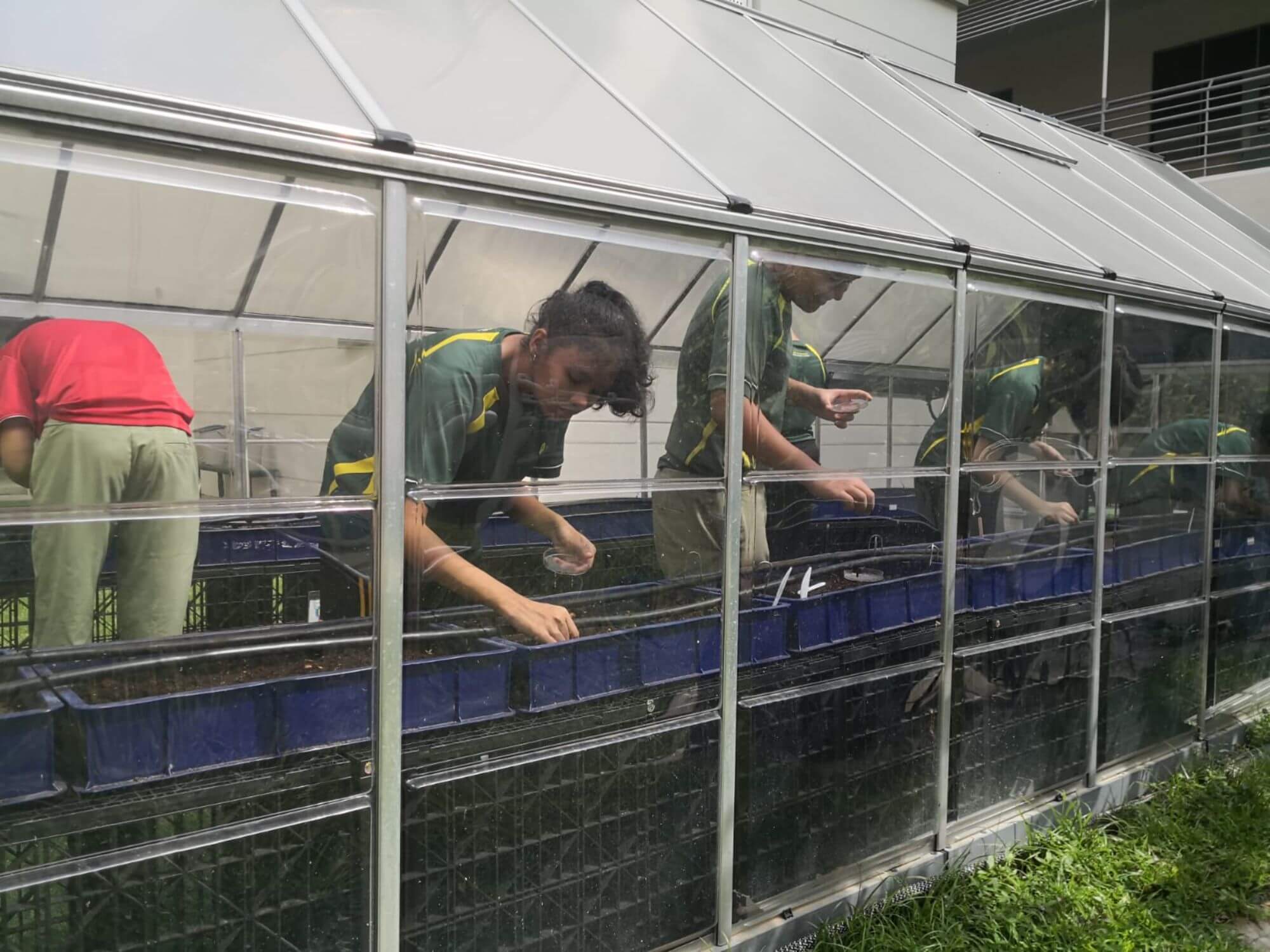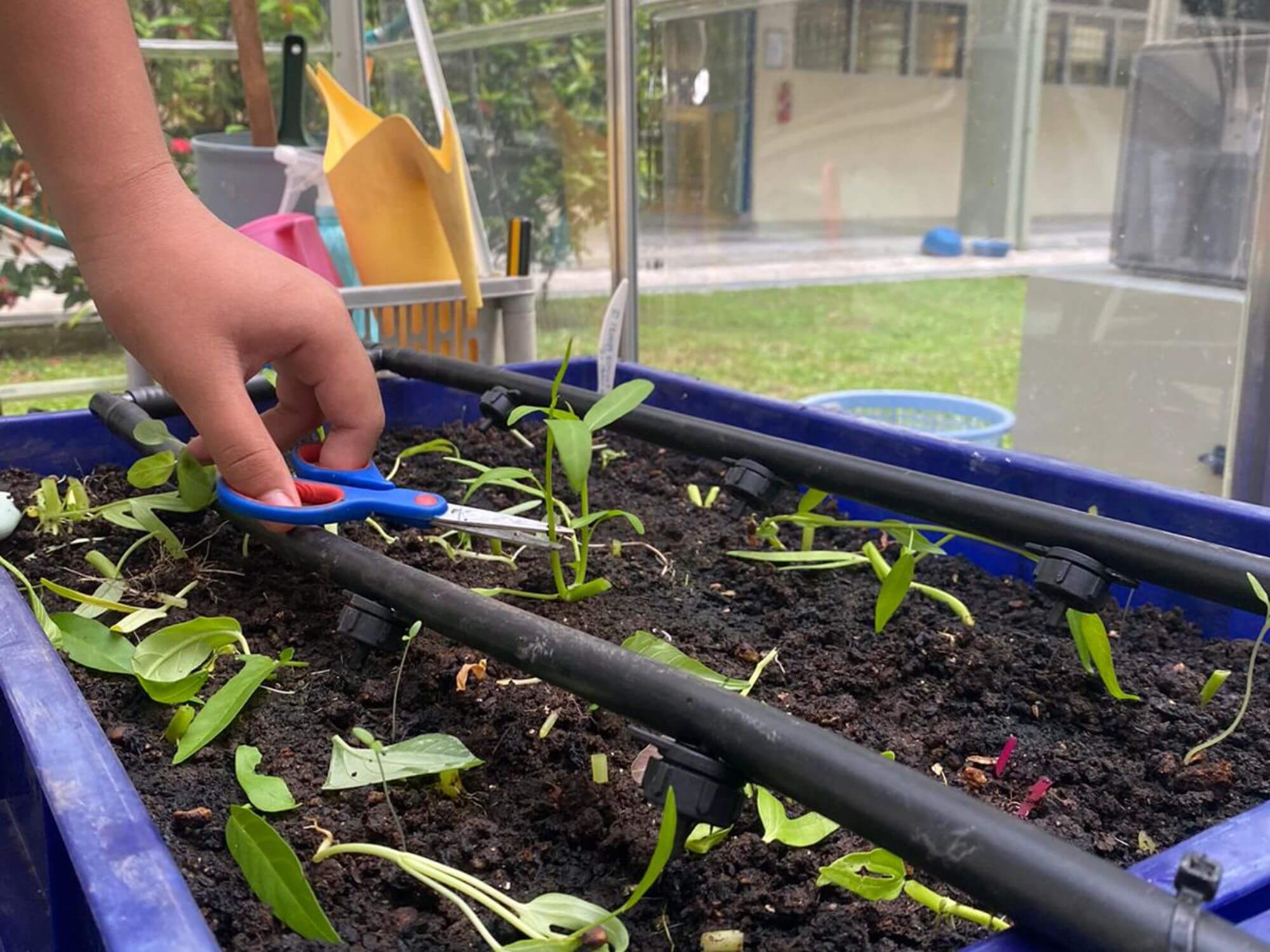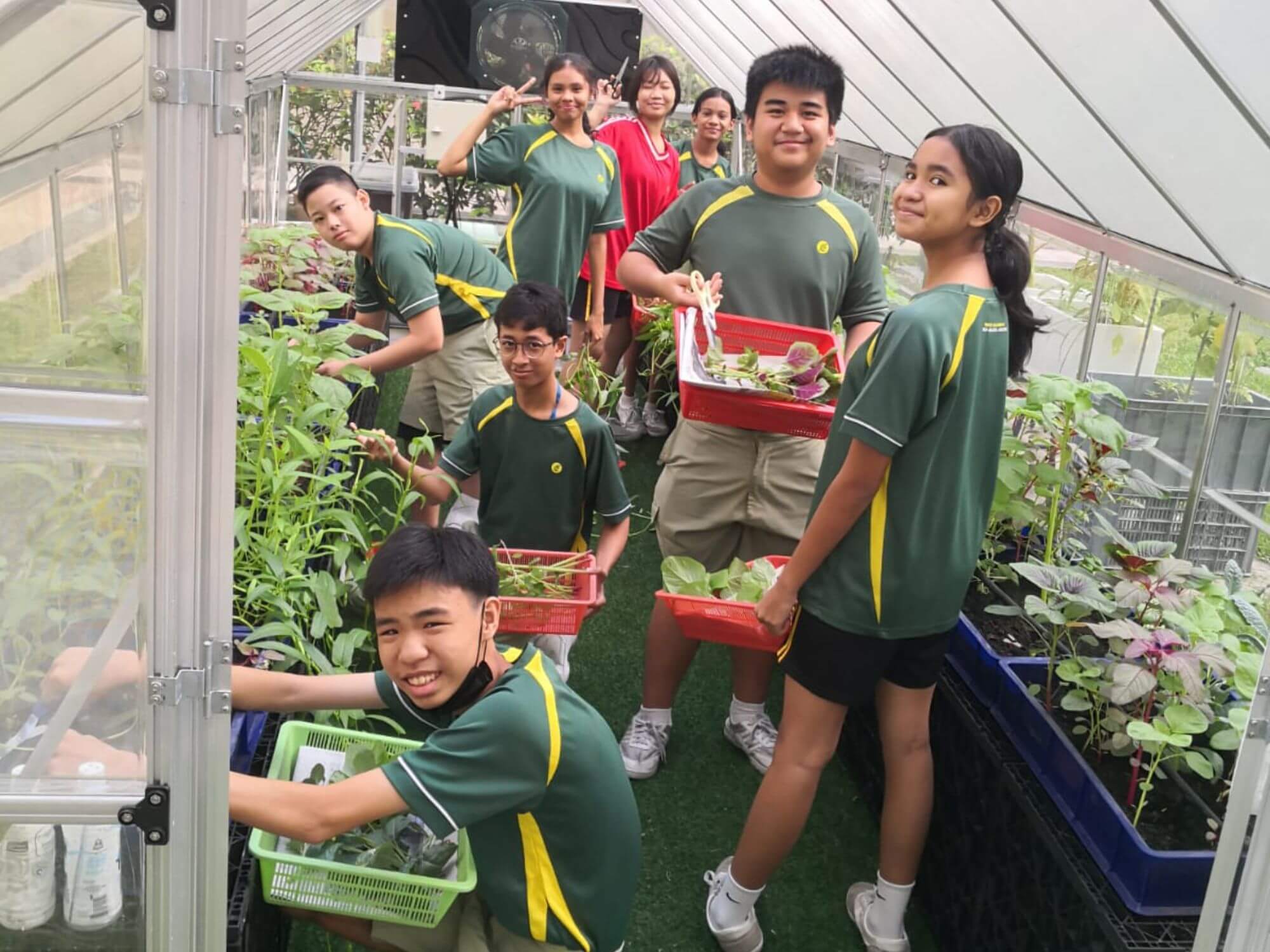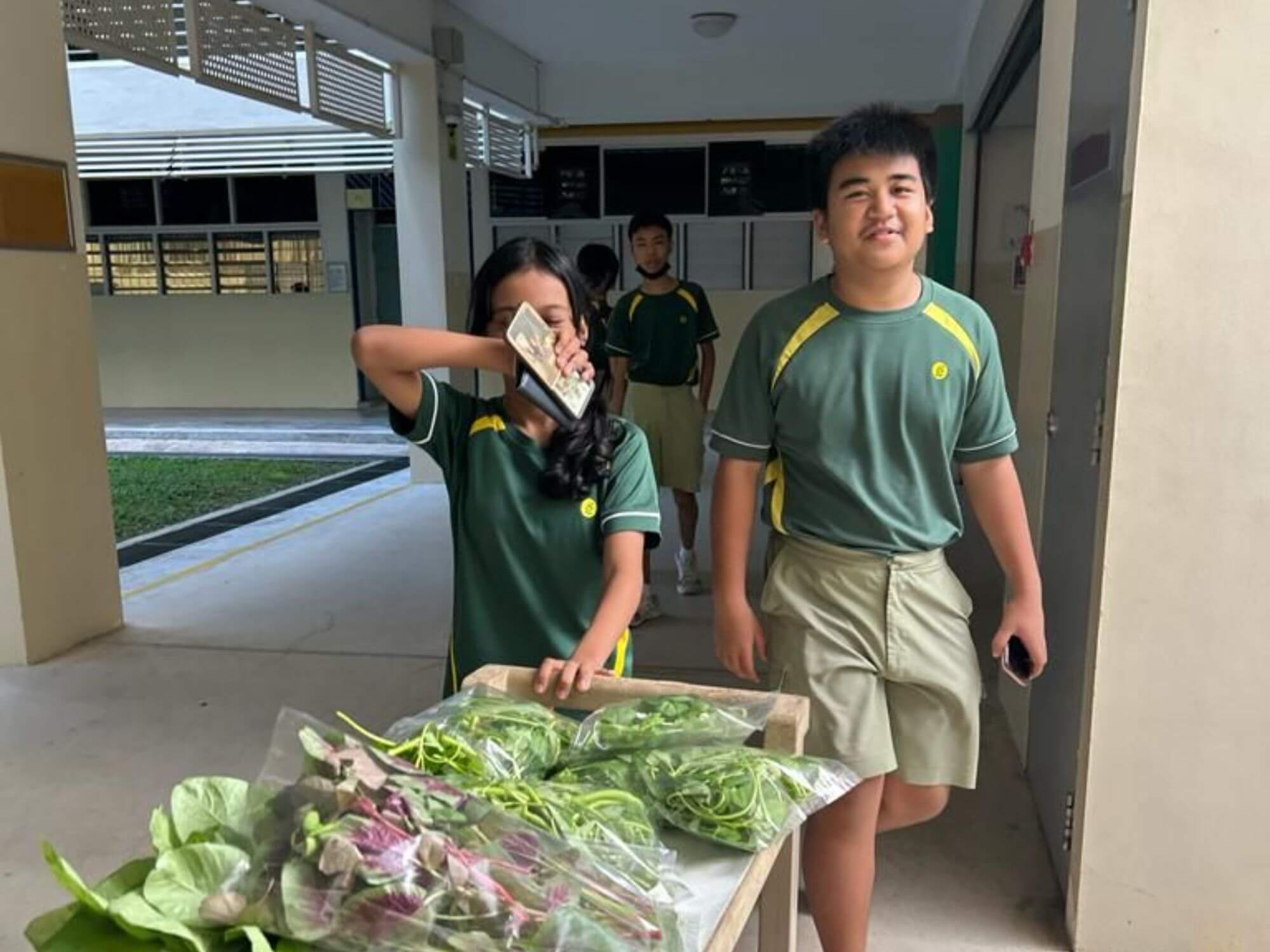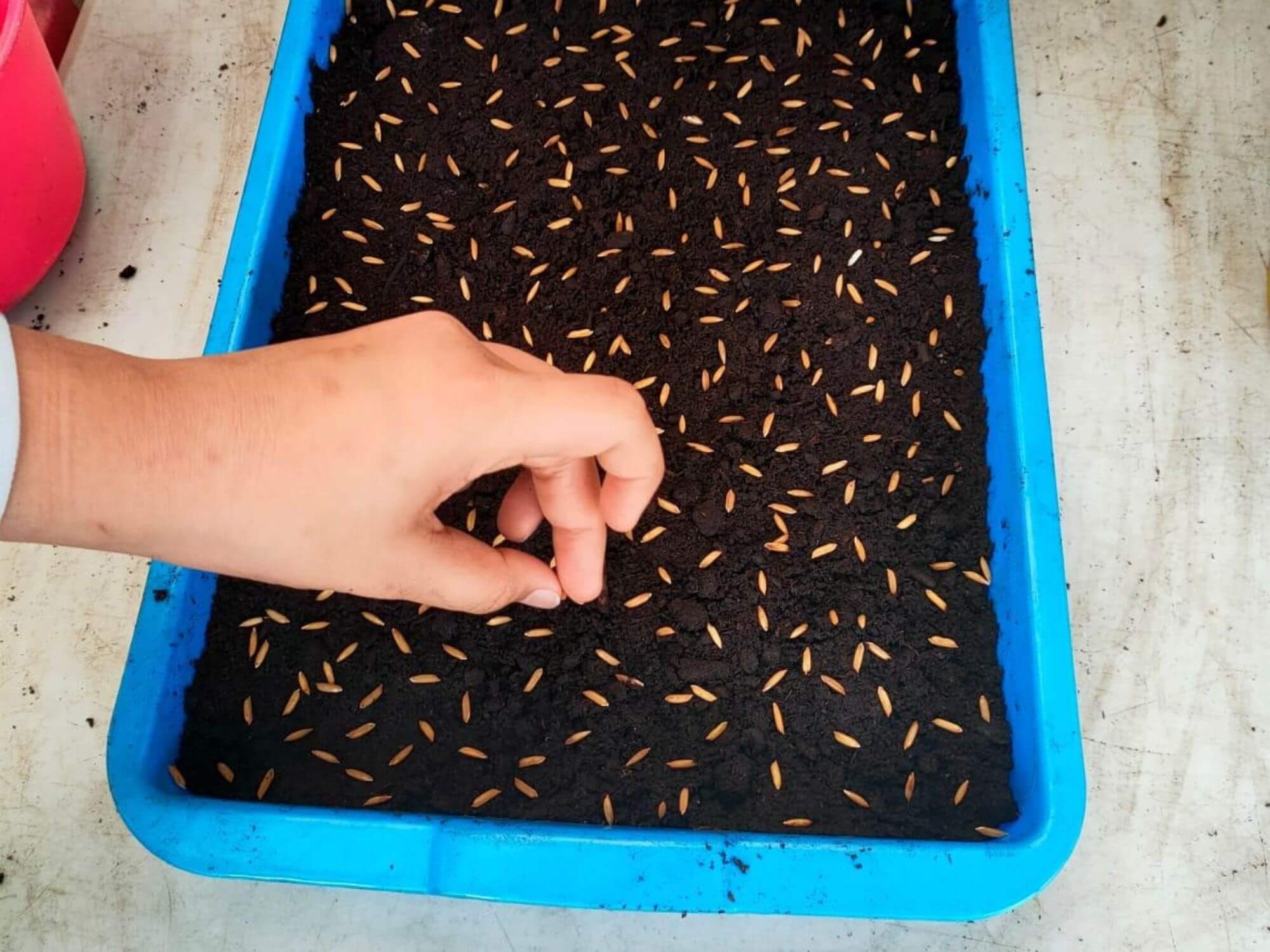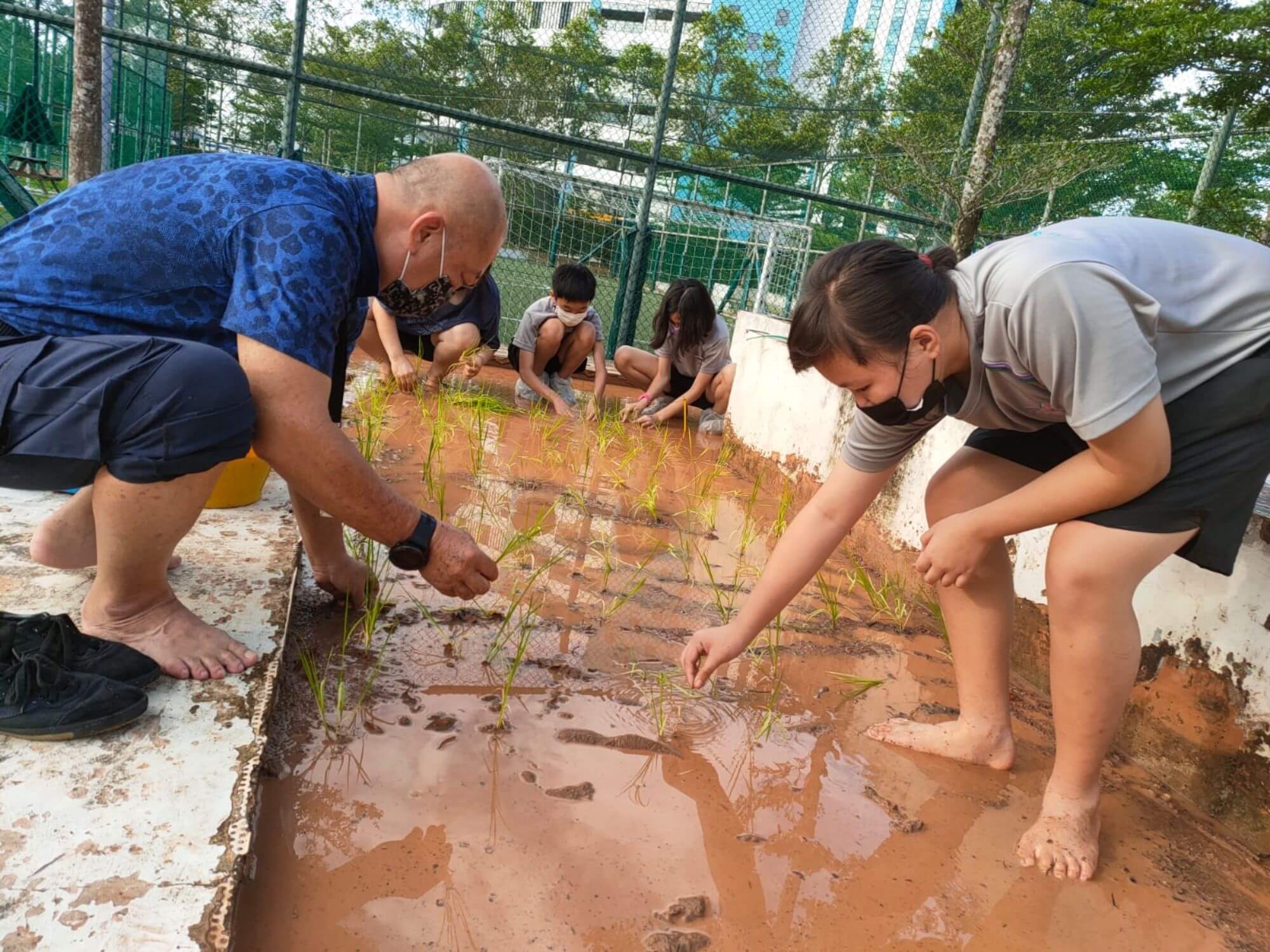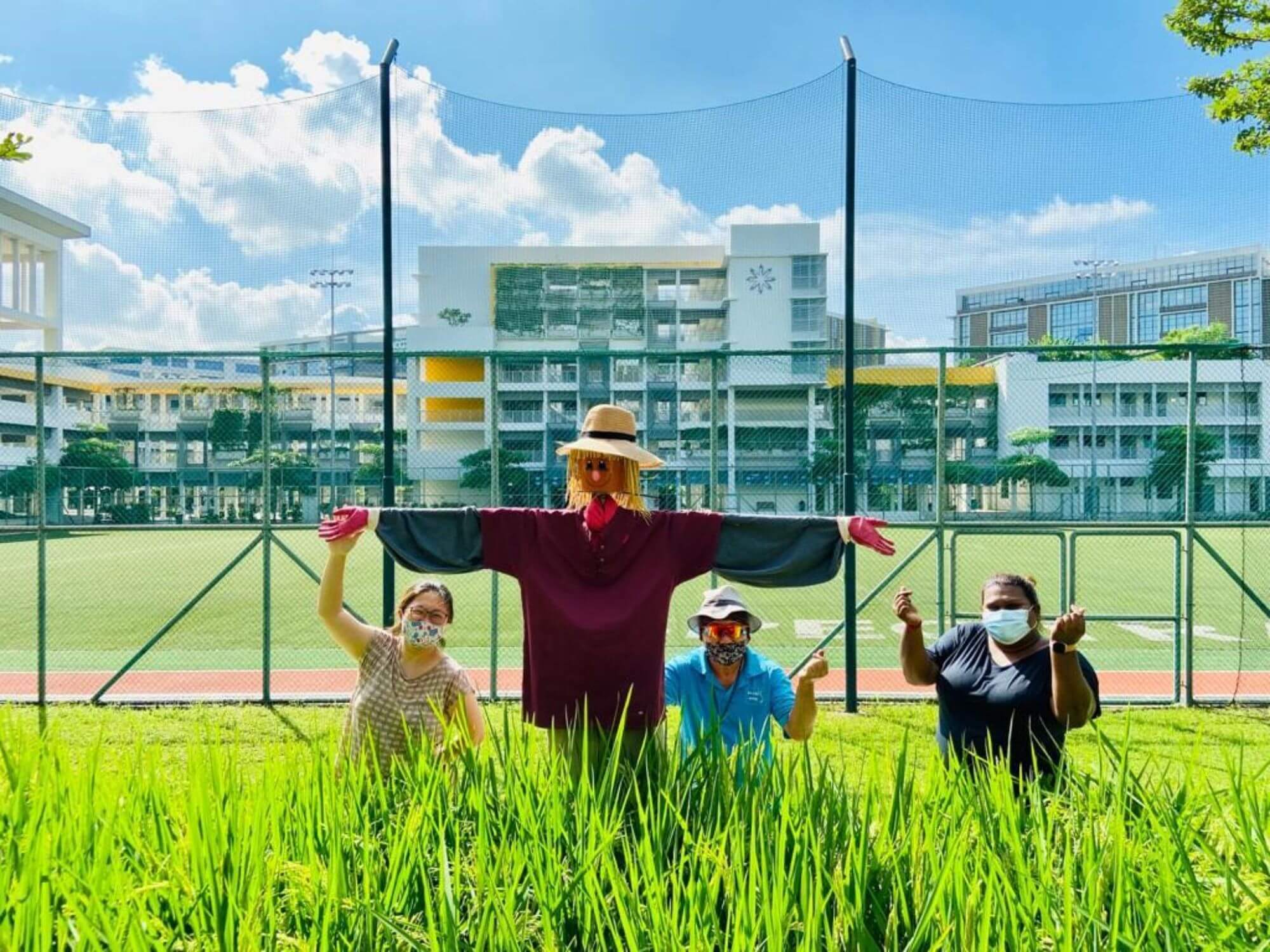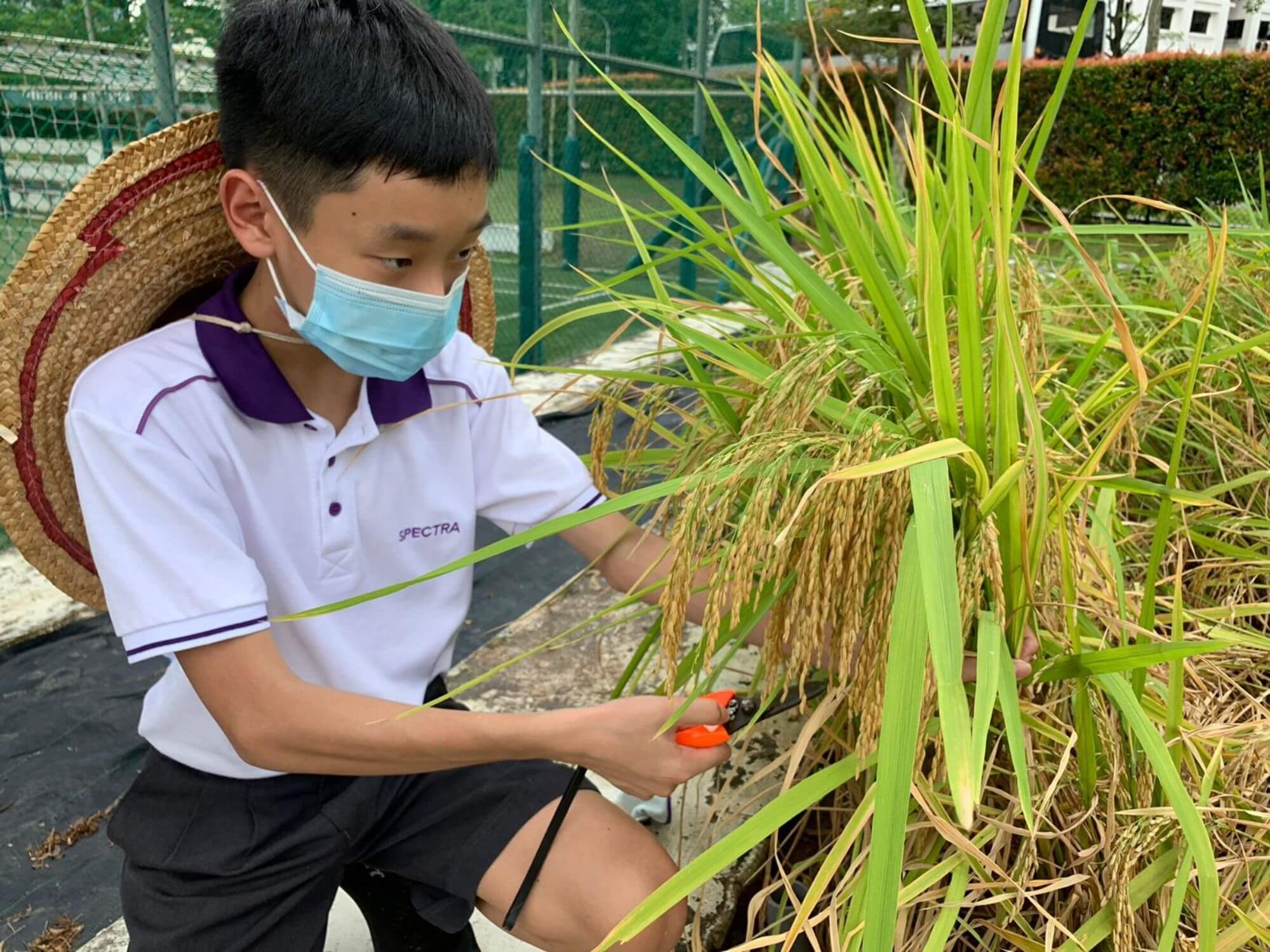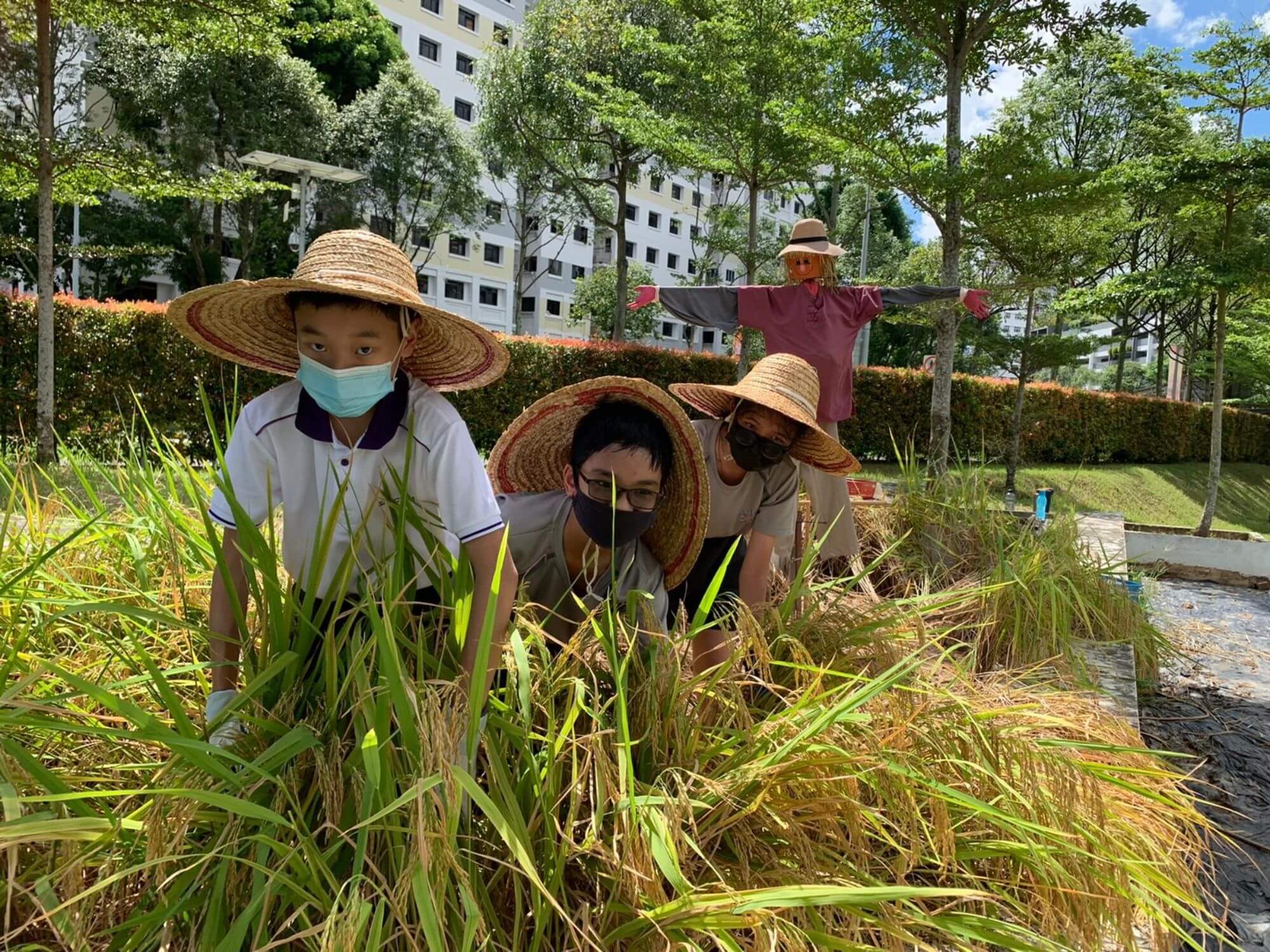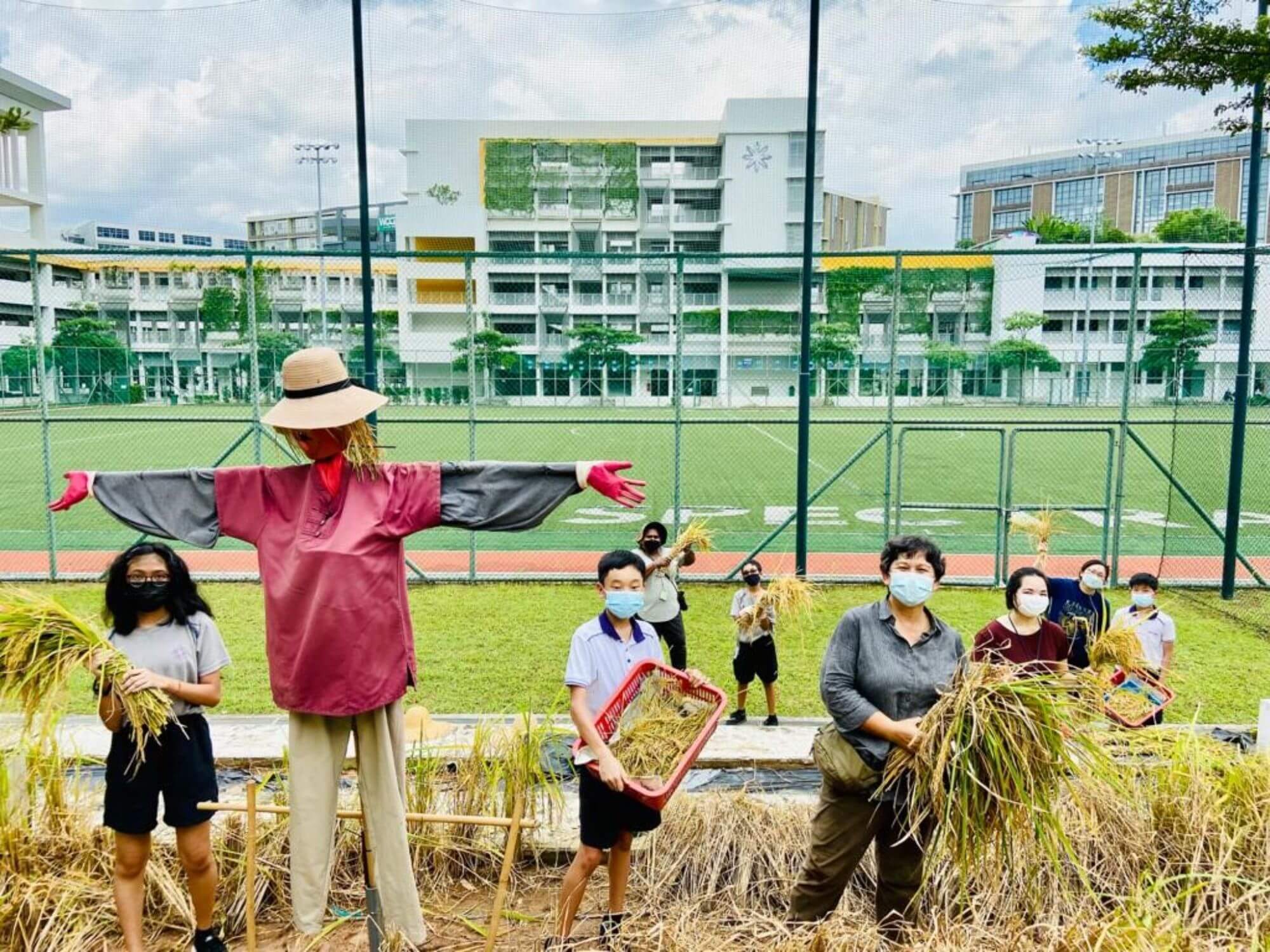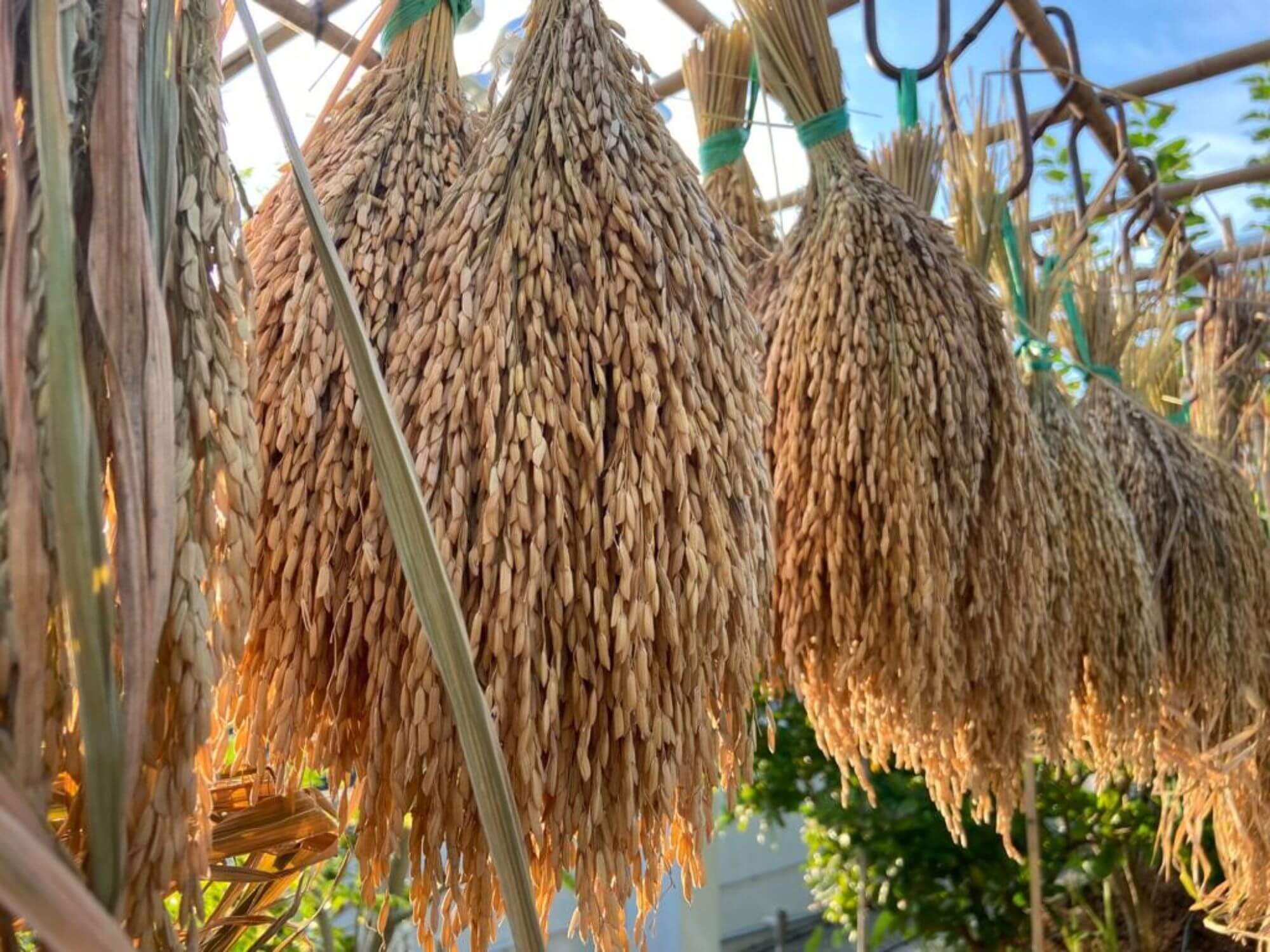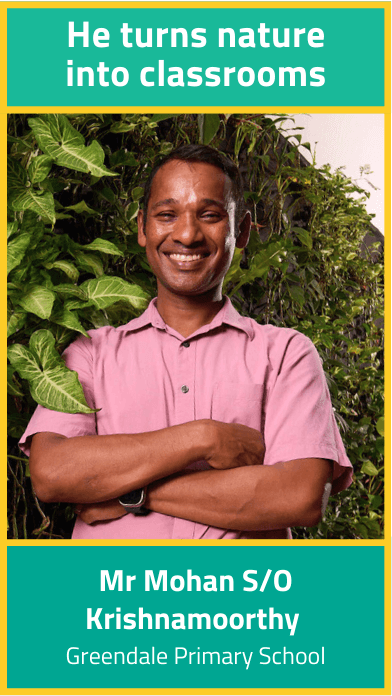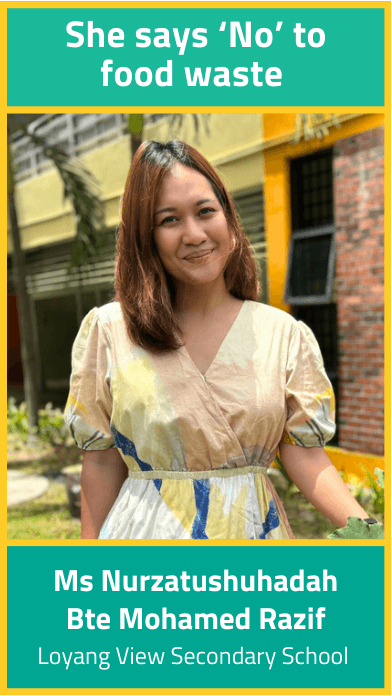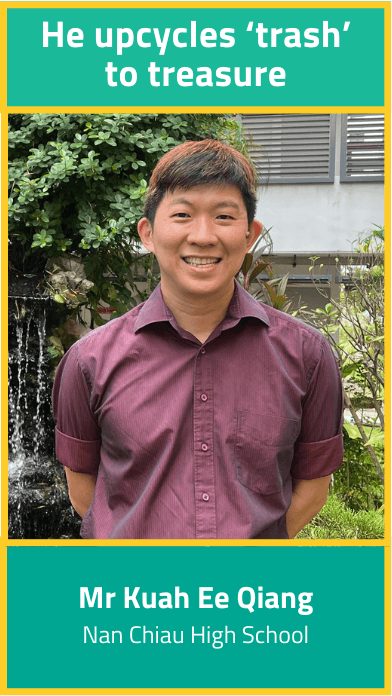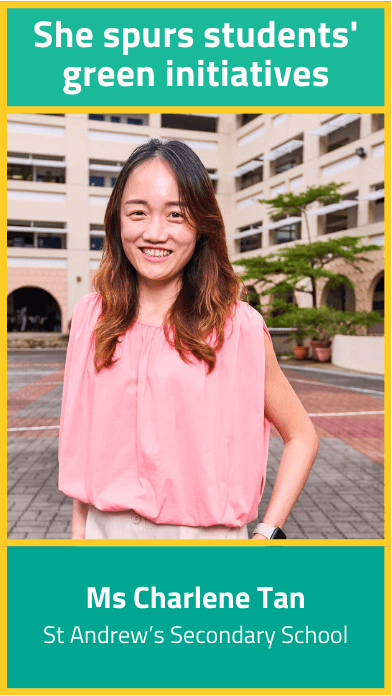In 2021, the Ministry of Education launched the Eco Stewardship Programme. It focuses on four key areas: Curriculum, Campus, Culture, and Community — or the 4 Cs. This way, students don’t just learn about sustainability in class; they live it at school, and bring the green message back home.
Explore how our schools are nurturing a generation of eco-conscious stewards.
Drag left or right on mobile device to view the 4 Cs!
Becoming pest patrol investigators
Ang Mo Kio Secondary School
Eco Club members trim plants, play detective with pest-hunting missions, and carefully collect soil samples.
Pro gardeners pave the way
APSN Tanglin School
Under the guidance of expert gardeners, students learn about sustainable practices, mastering skills like weeding and composting.
Hands-on lessons in hydroponic farming
Horizon Primary School
During Outdoor Education lessons, teachers turn green spaces such as the eco-garden and hydroponics farm into learning trails. Students explore biodiversity and sustainable farming, and pick up tips from the school gardener too.
Bringing home the school-grown produce
Kuo Chuan Presbyterian Primary School
Students harvest flowers and vegetables grown from seeds. They also take home portions of their harvest for the dinner table, and plant seeds using gardening skills they picked up at school.
Cultivating goodwill during school break
Pasir Ris Secondary School
During school holidays, students set up a hydroponic system and prepare soil in the greenhouse to grow vegetables. A month later, they harvest kang kong, spinach, and nai bai. The students then pack their lovingly grown produce and gift it to the canteen vendors.
Growing rice from scratch
Spectra Secondary School
Students grow rice over four months, from seed to harvest. They use repurposed terraces and build a scarecrow named Spencer. At harvest time, the entire school community pitches in to cut, dry, and thresh the rice.
Students show and tell their green efforts
Drag left or right on mobile device to view all videos
Discover Commonwealth Secondary School’s green campus
What you will uncover:
Thriving eco-habitats
Natural water systems
Food waste solutions
Green energy in action
Thriving eco-habitats
Commonwealth Secondary School has its very own rainforest. This eco-habitat is just one of several – the others being the ecological corridor, indoor garden, plant nursery, the stream, and wetland. The school also has outdoor and indoor farms.
Students come up-close with real eco-systems in action, learning about the interactions between organisms and how they depend on one another for survival.
Natural water systems
These habitats teach students about Singapore’s nature firsthand. During downpours, the rainforest eco-habitat demonstrates a contained mini flash flood, mimicking a flooded forest.
Students can see for themselves how the rainforest and wetland soak up rainwater, slowing down surface runoff into the canal outside the school. This provides relief for the drainage system. Rainwater is also collected in the underground rainwater storage tank beneath each of these two eco-habitats.
Food waste solutions
Six on-campus food digesters chomp down on unavoidable kitchen waste, turning fruit peels, vegetable trimmings, and other scraps into compost for the school’s farming plots and plant nursery.
Students collect raw food waste from stalls to feed the digesters. Cooked food is excluded as excess salt, oil, and amino acids could harm plants.
Green energy in action
95% of the school’s annual electricity consumption in 2023 was generated by 1,744 solar panels on the school’s roof.
The school also employs energy-efficient LED lights with ambient control. These lights automatically adjust their brightness in response to natural light conditions: dimming on bright days and brightening during overcast weather.
Mr Mohan S/O Krishnamoorthy
Greendale Primary School
Level Head, Science
HE TURNS NATURE INTO CLASSROOMS
“Ask our students about the school’s green spaces, and they jump up to answer. They learn patience and hard work, growing alongside the plants they tend to.”
Mr Mohan S/O Krishnamoorthy, Level Head, Science
Mr Mohan built a wetland pond in the school, right outside the Science lab. The pond not only provides habitats for biodiversity, inviting all kinds of insects and birds to visit and nest, but also acts as a living classroom for the school community.
“Why show a photo of a stick insect when you can bring a live one to class? Want to see a Plain Tiger Butterfly? Let’s grow the plants that attract them,” says Mr Mohan. His passion for nature and science may have to do with how his father and grandfather were both avid gardeners.
Ms Nurzatushuhadah Bte Mohamed Razif
Loyang View Secondary School
Teacher, Food and Nutrition
SHE SAYS ‘NO’ TO FOOD WASTE
“I tell my students that if everyone commits to a small action, it all comes together to achieve something big for the environment.”
Ms Nurzatushuhadah Bte Mohamed Razif, Teacher, Food and Nutrition
This teacher is on a mission to educate students about the importance of reducing food waste and adopting more sustainable practices.
When the Singapore Green Plan 2030 was released in 2021, Ms Shuhadah found herself taking a hard look at her daily routines and how she could incorporate more environmentally friendly practices in school and at home.
She was shocked when she peeked into the waste bins in her school kitchen after a cooking lesson, seeing the mountain of vegetable offcuts and food scraps destined for the trash.
To halve their food waste, Ms Shuhadah taught students to repurpose vegetable scraps and eggshells as fertiliser in the school’s urban farm.
Mr Kuah Ee Qiang
Nan Chiau High School
Teacher, Mathematics
HE UPCYCLES ‘TRASH’ TO TREASURE
“I share climate news with students to encourage sustainable habits, especially through upcycling.”
Mr Kuah Ee Qiang, Teacher, Mathematics
Mr Kuah turns newspapers into bowls, and coffee sachets into baskets. As the teacher-in-charge of the school’s Green Club Co-Curricular Activity, Mr Kuah guides his students in the art of upcycling.
Several of his Green Club students have embraced upcycling as a hobby. “They share their creations with me, and I try to refine their subsequent endeavours with constructive feedback.”
Mr Kuah started chronicling his upcycling methods on video in the aftermath of the second lockdown of the COVID-19 pandemic in June of 2021.
His most popular video on YouTube – a basket fashioned out of used beverage cartons – has gained an impressive 16,000 views. When not championing sustainable practices, Mr Kuah volunteers with animal rescue.
Ms Charlene Tan
St. Andrew’s Secondary School
Subject Head, Science
SHE SPURS STUDENTS’ GREEN INITIATIVES
“My greatest achievement is inspiring students to care about societal impact, not just exam scores.”
Ms Charlene Tan, Subject Head, Science
Ms Tan takes her students to the Kallang River, which is near the school. They take part in river-related activities there as part of their Science, Geography and PE lessons. Students learn about water purification methods, and partner with residents in the neighbourhood to maintain the river.
She also leads a student group called The Green Envoys. The group has initiated projects such as e-waste recycling and growing edible plants. They are so passionate about coming up with ideas and executing them that all Ms Tan has to say is “Why not?”.
The group proposed a school-wide collection of used red packets for recycling after Chinese New Year, and Ms Tan agreed. Students quickly took action, addressing the school during morning assembly to rally support.
Boon Lay Garden Primary School
CRAFTING MESSAGES ABOUT SUSTAINABILITY THROUGH ART
Primary 3 and 4 students at Boon Lay Garden Primary created sculptures from recycled materials, guided by an artist known for using found objects. These artworks were then displayed at Tiong Bahru Bakery.
Students explored various art techniques, such as molding cardboard, painting flowerpots, reshaping paper cups, and weaving t-shirt yarn. Many expressed surprise at the artistic potential of items often considered as waste.
The project was more than just creating art, students also learnt about the Semakau landfill and were challenged to envision a future where recycling efforts were neglected.
Young artists saw their recycled creations showcased in Tiong Bahru Bakeries nationwide. This exposure boosted their confidence and sparked community-wide talks on sustainability and waste reduction.
“Knowing my art can inspire others and spark conversations about creativity and sustainability is rewarding.”
Justin Teo, Primary 6
“It’s encouraging to see our community support and celebrate creative ways to make a difference.”
Hsu Mya Nandid Htet, Primary 6
“I learnt that art can be made from anything, and we can help the environment in many creative ways.”
Sahana D/O Kumar, Primary 6
“Working together with my schoolmates, we got to make bigger sculptures than any of us could do on our own.”
Wong Pei Yun, Primary 6
For more interactive stories, visit Schoolbag.edu.sg
